6. THE SHAPING OF A NATION

JACKSONIAN CULTURE
| CONTENTS
 De Tocqueville's Democracy in De Tocqueville's Democracy in
America
 The industrial revolution continues The industrial revolution continues
forward in the East
 Individualism and isolation of life in the Individualism and isolation of life in the
opening West
 Unitarians and Deism also flourish in Unitarians and Deism also flourish in
the East
 The Second Great Awakening The Second Great Awakening
 The Mormons The Mormons
 The Larger Christian mission The Larger Christian mission
The textual material on this webpage is drawn directly from my work
America – The Covenant Nation © 2021, Volume One, pages 230-247.
|
|
A Timeline of Major Events during this period
| 1820s |
Americans prove themselves to be highly inventive – materially and spiritually
1820s Inspired by the dedication of the highly active Bishop Francis Asbury (1790s to 1816), Christian "Methodism" spreads
quickly ... especially in the isolated and hardscrabbled western
frontier lands – where hundreds of circuit riders work feverishly to spread the Christian Gospel
Finney
turns religous camp meetings into something of a religious science ...
his carefully engineered religious program soon followed by other revivalists
Millennialism (expecting the 2nd coming of Christ) infects the
American religious heart everywhere
Thus the "Second Great Awakening" (actually started in the 1790s)
gathers momentum .. most notably in Western New York (later
termed the "Burned-Over District")
This is
coupled with the growth of various Christian organizations uniting
various Protestant denominations:
American Bible Society, American Sunday School Union, Board of Foreign Missons,
Anti-Slavery Society, American Temperance League (anti-alcoholism), etc.
1825
The 8-year project of the Erie Canal is completed, opening
a water route from New York City all the way to Lake Erie in the Great
Lakes region
1828
The first segment of the Baltimore and Ohio Railroad is
started up (completed in 1830) beginning a rush to build railroads that
will continue unabated through
the entire 1800s
|
| 1830s |
This inventive momentum carries over into the 1830s
1830s Unitarianism and Deism also show strong growth in America (supported greatly by Jefferson)
1830 Joseph Smith publishes the Book of Mormon, beginning the Latter Day Saints (LDS or "Mormons") ... also birthed in the "Burned Over District" of New York!
1831 Cyrus McCormick demonstrates his new mechanical reaper ... revolutionizing the farming industry
1833 William
Miller (also based in the Burned Over District) predicts Christ's
second coming to take place in 1844
... birthing what eventually becomes the Seventh-Day Adventist
movement.
1835
The Frenchman Alexis de Toqueville will detail what he observes of the
unique America spirit in his two volume study, Democracy in America (1835/1840)
Late 1830s
Emerson (and his neighbor Alcott) propose a Higher or more
"Transcendental" religion ... one drawing much of its character from
Hinduism
|
DE TOCQUEVILLE'S DEMOCRACY IN
AMERICA |
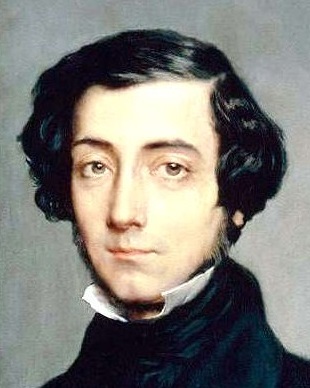
Alexis de Tocqueville – author of Democracy in America (two volumes: 1835-1840) offering a French perspective on America's democratic society
... admiring of Americans' egalitarian spirit and restless individualism
but negative about Americans' still-Puritan personal ethics
and concerned about where American slavery was taking the country
|
De Tocqueville's Democracy in America
In 1831 the Frenchman Alexis de Tocqueville
arrived in America, ostensibly to study the American prison system. But
he and his associate Gustave de Beaumont were truly more interested in
studying the American society in general, a subject of great interest
to the French. Tocqueville published in two volumes the results of his
study as Democracy in America, appearing in 1835 and 1840 at the height
of the Jacksonian era. It provides an incredibly insightful view of the
American culture by one standing outside that culture.
He noted the hugely individualistic spirit of the
typical American and the restlessness of the American heart, which was
already looking for the next challenge before it had completed the work
on a previous challenge. He also noted the spirit which defended the
basic equality of all (Whites), ever-ready to challenge presumptions of
superiority on the part of others. He correctly attributed the origins
of this egalitarian spirit to the Puritans of New England as well as
the principle of the sovereignty of the people founded in the early
Puritan covenants and state constitutions.
But he also noted the contradictions to all this
posed by the agonizing question of slavery. Also, from a Frenchman's
view with its more liberal attitudes toward marriage and the sexes, he
was distressed at how rigid were the sexual roles assigned to men and
women, both in and out of marriage (but this also was a Puritan legacy,
unknown in France). He was also concerned about the dangers of
democracy turning into a tyranny of the ignorant majority, unrestrained
by the more enlightened understanding of social dynamics by society's
more polished and better educated social elite. And he correctly
predicted the tragedy of war that would eventually occur over the
wrenching issue of slavery. In short, he described clearly the good and
the not-so-good of Jacksonian America, at least as the French
understood the social ideas of good and bad.
|
THE
INDUSTRIAL REVOLUTION
CONTINUES FORWARD IN THE
EAST |
|
The restlessness of the American heart that
Tocqueville noticed was clearly obvious in the incredible amount of
industrial activity – and innovation – pushing the American economy
ever-forward. The development of the steam engine permitted extensive
mechanical operations to take place where no water power was readily
available to turn the wheels of industry's many new mills appearing
across the North (by 1840 there were some 1,200 cotton mills in
operation, mostly in the American Northeast).
Foodstuffs, raw materials, and even finished goods were constantly on
the move in America – along the turnpikes and the many canals being
laid out across the East. By 1818 the National Road had been completed
linking the American East at Baltimore and Philadelphia with the Ohio
River valley at Pittsburgh and thus providing access to the American
interior all the way to the Mississippi. With the development of steam
power,1 paddlewheel boats able to go both ways on the great rivers of
the American interior were soon moving vast amounts of produce from the
West back to the East – and people and their goods headed to new lives
in the West.
The Erie Canal
Not to be outdone by Baltimore and Philadelphia,
New York, under the direction of its industrious Governor DeWitt
Clinton, decided in 1817 to dig a canal from the Hudson River at Albany
all the way to Lake Erie at Buffalo, thus gaining access to the
American interior by way of the Great Lakes. The 363-mile project was
open for business by 1825 (which turned out to be a highly profitable
venture!).
The first railroads
In 1827 the town fathers of Baltimore, seeing
water traffic outbid their wagon road, decided to investigate the
possibilities of laying a railroad, similar to one under development in
England. In 1828 they laid the first rails and by 1830 they had
completed the first portion of the Baltimore and Ohio Railroad.
Then, not to be outdone by New York with its Erie
Canal and Baltimore with its railroad, Massachusetts in 1830 and 1831
decided to undertake the building of a railroad across the low
mountains to the West, to link Boston with Albany on the Eire Canal,
completing the program by 1842.
Eight years later (1850) almost 3,000 miles of rail line then connected
New England towns with even the Great Lakes. And by 1852 the Baltimore
and Ohio Railroad was the first Eastern railroad to reach the Ohio
River. This was such a boon to business, that the following year (1853)
the mighty New York Central Railroad was formed by consolidating ten
smaller railroad companies.
Meanwhile in the South, in 1828 the town fathers
of Charleston decided to open up their city by rail all the way south
to the Savannah River (to gain some of the trade which was prospering
rival city Savannah tremendously). When it was completed in 1833 it was
at that point the world's longest railroad. Eventually the South
extended the reach of its rail system, by 1851 reaching Chattanooga on
the Tennessee River and from there ultimately Memphis on the
Mississippi River.
The mechanical reaper revolutionizes agriculture
In 1831 Cyrus McCormick held a demonstration of
his new reaper, which with one mule and one driver could harvest wheat
at six times the rate of a single farm worker.2 Needless to say, the
reaper now became not only highly sought after, it soon became standard
equipment on the large farms of the American Midwest, which themselves
were industrial enterprises rather than just mom-and-pop operations
designed merely to support a single family.
1In August of 1807 Robert Fulton's steam-driven dual paddlewheel North River Steamboat
made the amazing 150-mile boat trip up the Hudson River from New York
City to Albany in 32 hours of actual travel (not counting stops along
the way).
2McCormick's
claim to have invented the reaper was challenged by another inventor,
Obed Hussey, whose 1833 invention was in fact a better machine. The two
improved their models and competed until Hussey was finally driven out
of business.
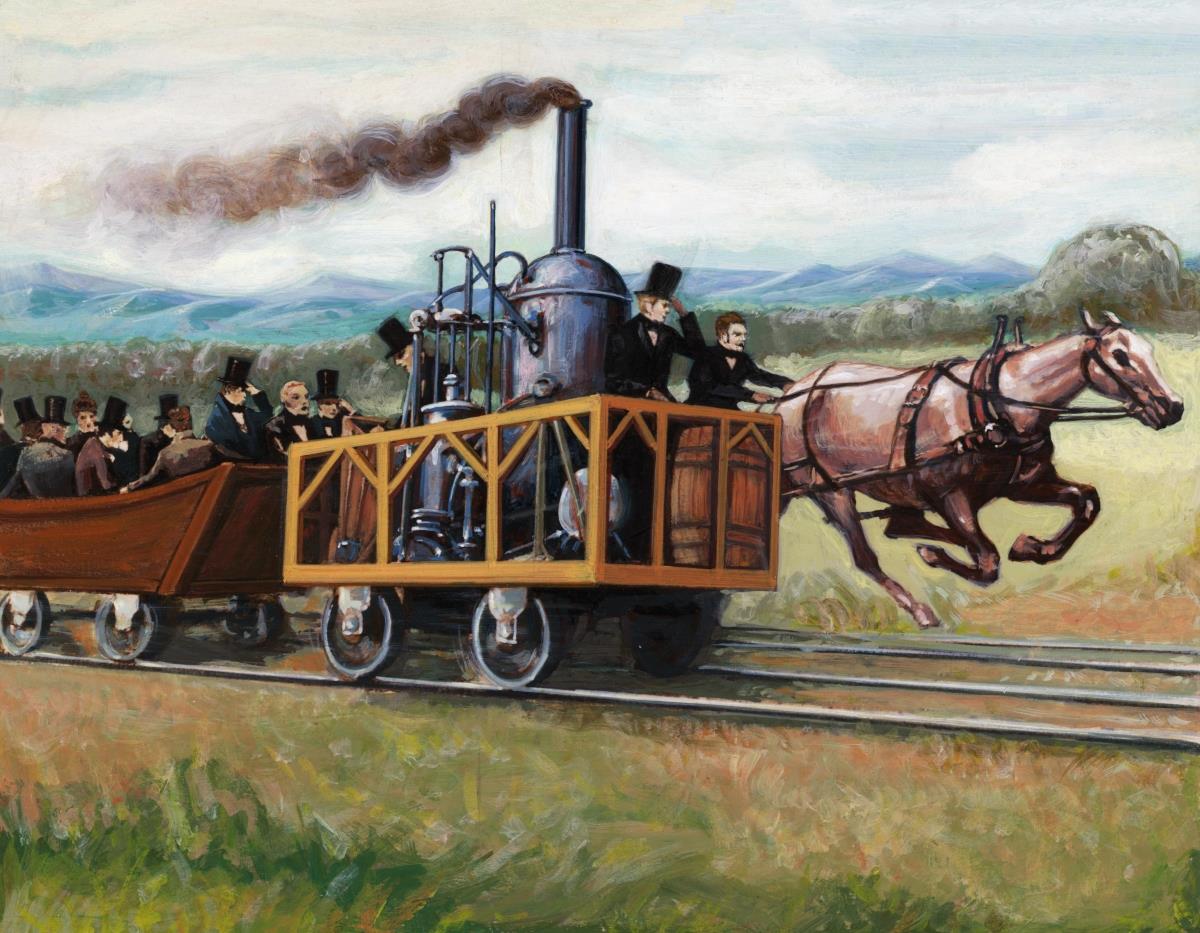
Steam-driven Tom Thumb racing a horse (August 1830)
The locomotive pulled well ahead of the horse ... until a belt broke in the locomotive, ending the race.
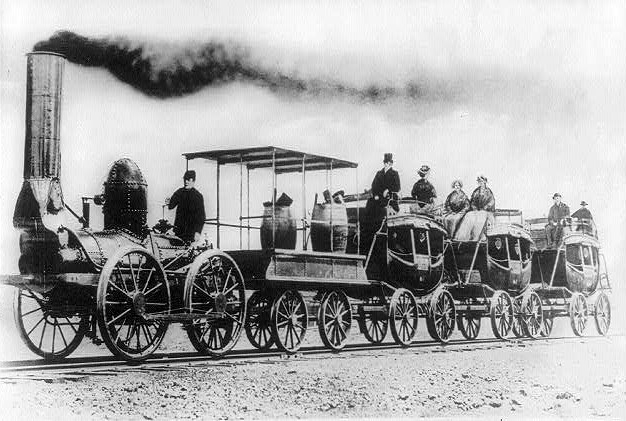
A very early American steam-driven locomotive, the De Witt Clinton – 1831
(named after the New York
governor)
Library of
Congress
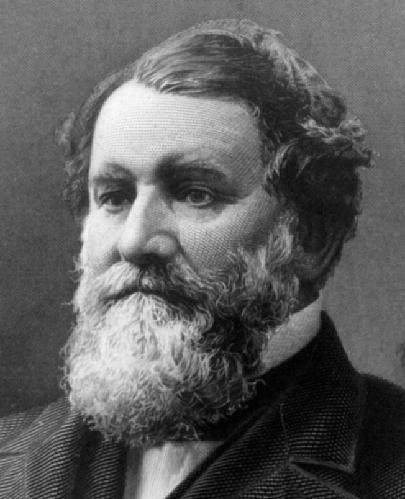
Cyrus McCormick
His reaper helped revolutionize the American farming industry
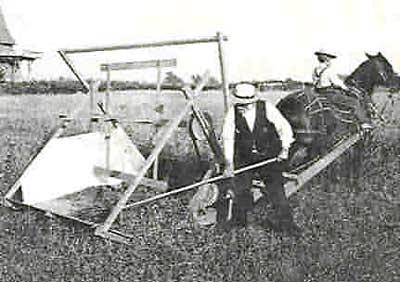
A demonstration
being given on the operation of the McCormick reaper (1831)
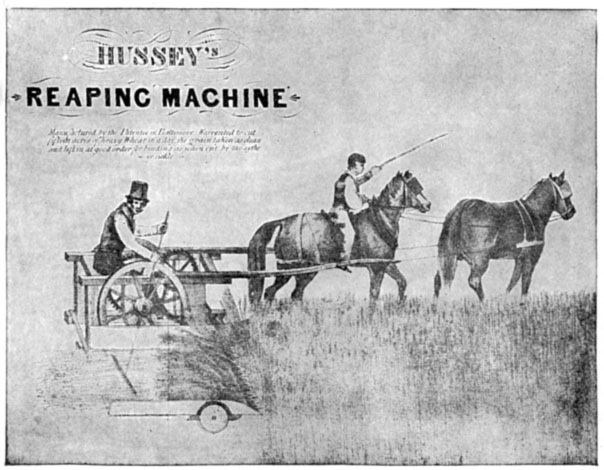
In competition with McCormick was the reaper invented by Obed Hussey (1833)
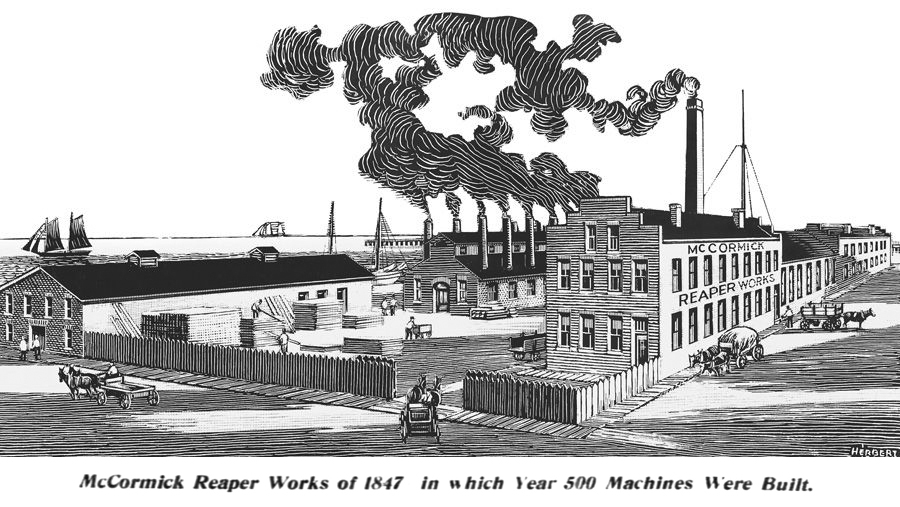
INDIVIDUALISM AND ISOLATION OF LIFE IN THE OPENING
WEST |
|
The American world was changing fast, and change itself produced its own problems, psychological as well as physical.
On top of all this change, it was obvious by 1830
that the land was playing out in the East. The stony soil of New
England had never been that great and – stressed by a rapidly expanding
population – the region was unable to sustain a stable agricultural
existence. So the 1830s and 1840s saw streams of New Englanders heading
West across the Appalachian Mountains and down the Ohio River to find
new homes in Ohio, Kentucky, Indiana, Illinois, and across the
Mississippi into Missouri. Likewise, the cotton farms of Virginia, the
Carolinas and Georgia were playing out, sending settlers West into
Alabama, Mississippi, Louisiana, and even into the northern Mexico
territory of Texas.
Unlike the planned movements and settlements of
the Puritans two centuries earlier, there was no organization or
coordination to this movement. Individuals just simply up and moved in
the hope of starting a new life in the West. But life in the West
proved to be isolating, and dangerous under the constant threat of
Indian attack.3 Yet such a life produced highly independent and
self-sufficient Americans, hunters and riflemen, well able to secure
meat from nature, and prepared to fend off the dangerous Indian.
3The
results were always murderous for men, women and children, or worse,
torturous, because Indians loved to gather to watch their captives
writhe in carefully administered pain until they finally expired.
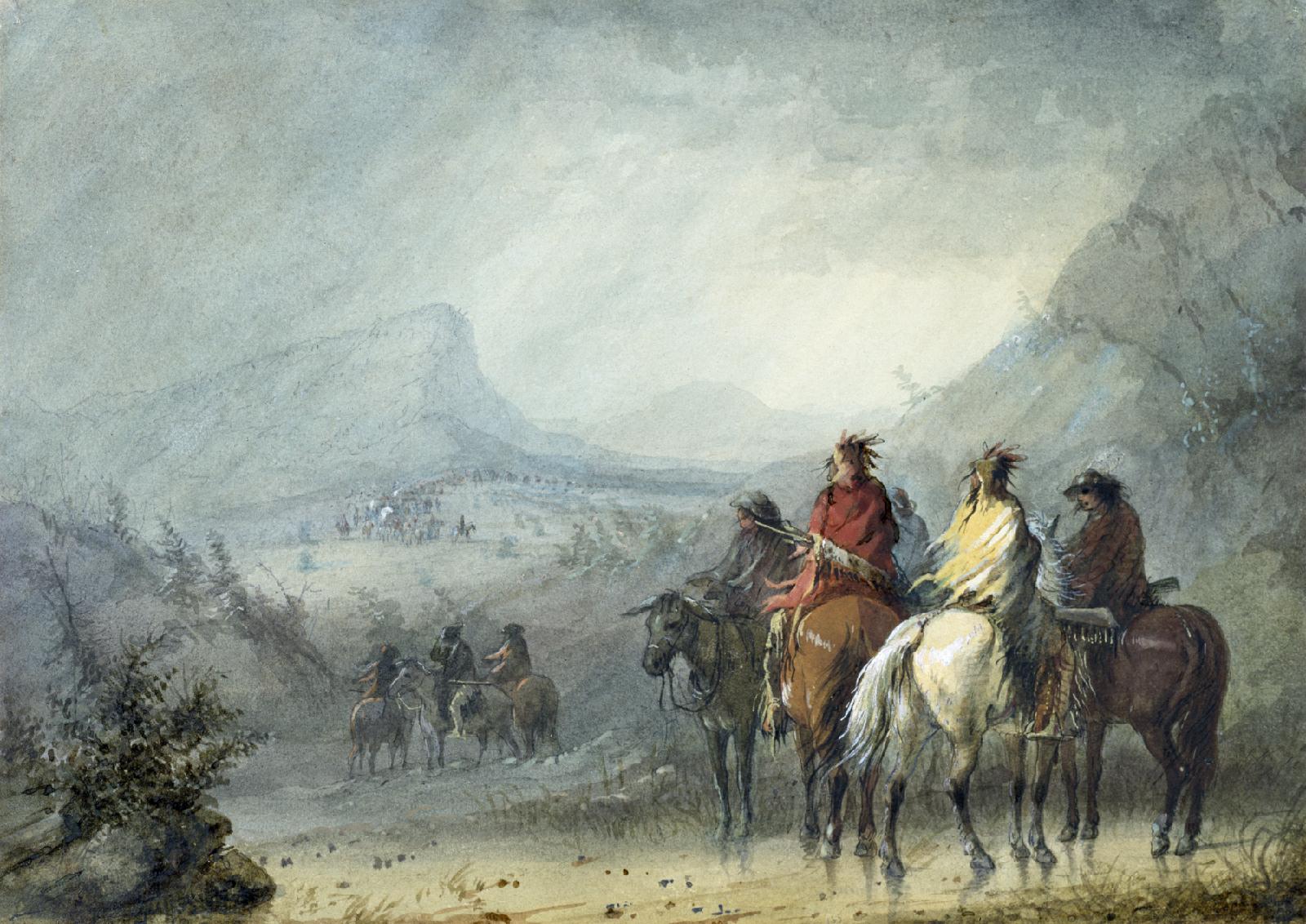
As
the lands of the East filled up and the soil got overworked through the
generations, streams of Anglos headed westward, looking for new land to
set up their homes
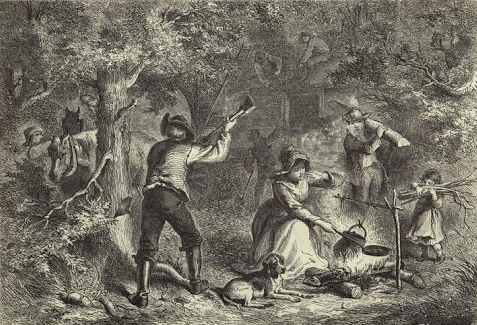
Life on the frontier was very, very tough
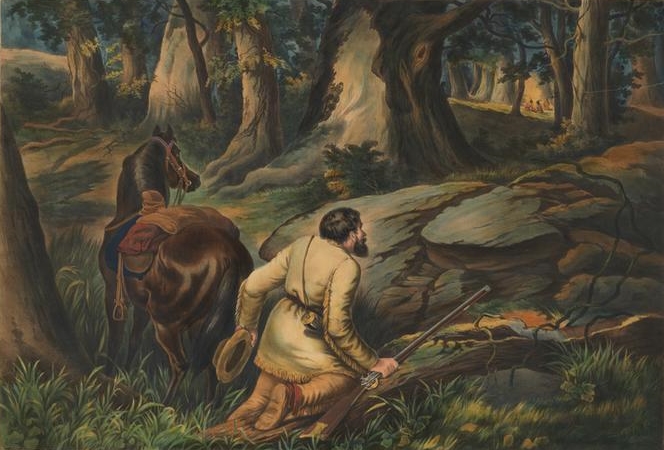
And there was always the matter of the Indians ... who understood this land to be theirs – not up for giveaway to the intruding Anglos
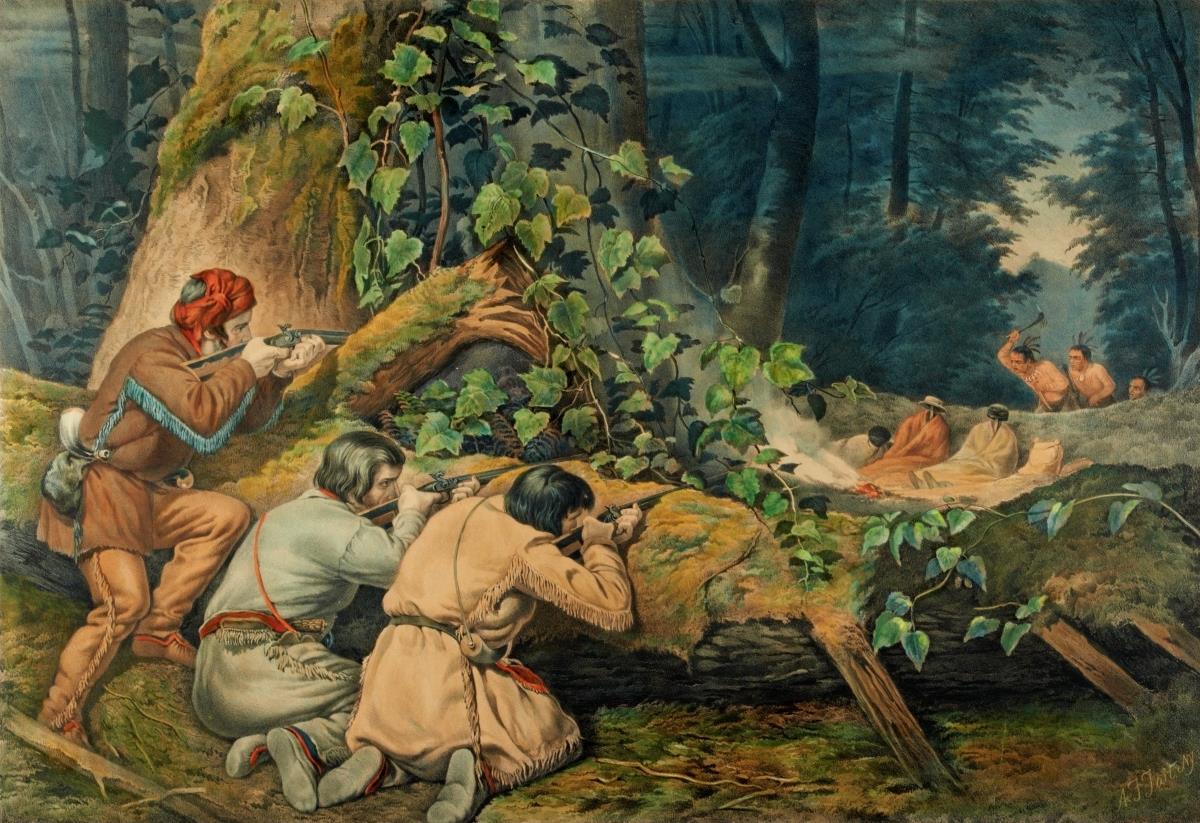
Indian raids were of course common on the frontier
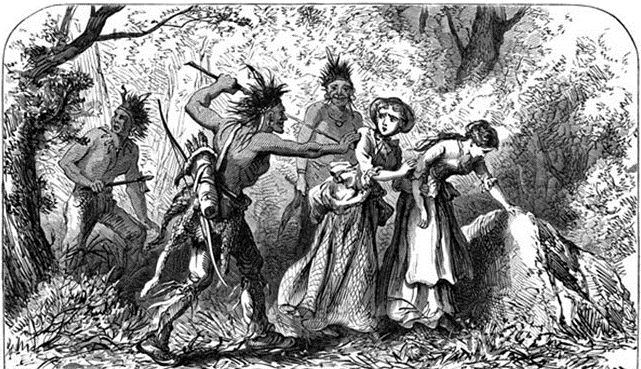
And Indians played by their rules, not the Anglo rules of warfare
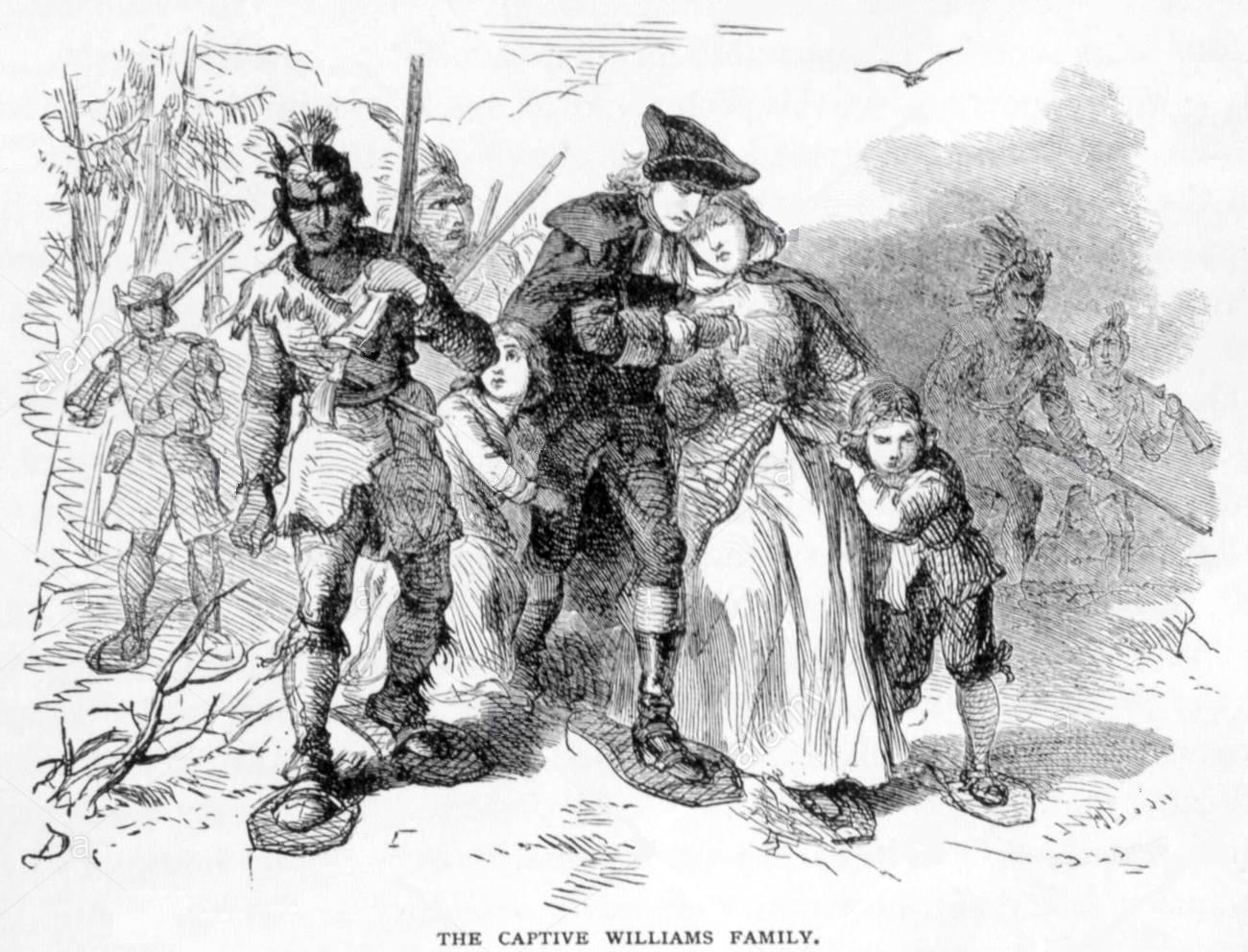
Reverend John Williams and his family taken captive
UNITARIANISM AND DEISM
ALSO FLOURISH IN THE
EAST |
|
Unitarianism and Deism flourish in the East
At the same time, for others, especially those
living along East-coast America, a comfortable small-town life
(dependent on an economy other than just agriculture) seemed to have a
natural peace and prosperity to it. Not surprisingly, life took on a
more rational character, thus stepping back from its previous fervency
in its Christian spirituality. Americans, especially among the more
leisured professional classes, found themselves less interested in what
God might do in their lives and more interested in what they might
achieve for themselves under this more rational social realm emerging
around them.
They did not abandon Christianity, because being Christian was
understood to be the same as being civilized. But the faith component
(trust in God as the essential higher power in their lives) was
disappearing. Its place was being taken by a rational morality, a key
part of Enlightenment Humanism that was sweeping intellectual circles
at the time, in America as well as Europe. Such Humanism usually
claimed the moral teachings of Scripture, especially the teachings of
Jesus, as its Christian foundation. But in the end, no such connection
was absolutely necessary, for these were self-evident truths that any
rational person would understand as the foundation of any life well
lived (French revolutionaries had gone so far as to disdain even this
slender Christian connection with their utopian Idealism).
Once again (as in the enlightened days of the late
1600s and early 1700s) enlightened Americans of the early 1800s were
convinced that Human Reason was vastly superior to the pre-scientific
superstitions about life held by simpler Americans – Americans who were
intellectually unable to shake off the irrational beliefs about people
walking on water and raising the dead back to life. The enlightened
ones were easily disdainful of those who clung emotionally to a
religion drawn from a darker past. Of course, they failed to notice
that their new Rational Humanism was no newer than the story of Adam
and Eve's fall in the Garden of Eden or the long Biblical narrative
about the repeated wandering of ancient Israel away from the counsel
and discipline of God – and its tragic results.
Christian Unitarians
In the early 1800s a huge split occurred within
the Congregationalist churches of New England, a split that ultimately
came to center on the professorship of theology at Harvard College, a
position which remained empty from 1803 to 1805. When the position was
finally awarded to the Liberal Henry Ware, the conservative Calvinists
left Harvard and founded the Andover Seminary. There they would be
joined by the more evangelical members of the New Divinity4 group.
Meanwhile, Harvard College moved off more strongly in the Unitarian
direction.
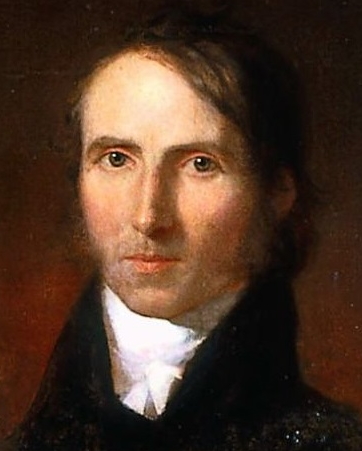 Inspired by a sermon preached in Baltimore in 1819
by Boston pastor William Ellery Channing, entitled "Unitarian
Christianity," a sermon that found itself well-received among numerous
New Englanders, the Unitarian movement began to grow rapidly,
particularly among a large number of (mostly Congregationalist)
pastors. This soon (1825) led over a hundred Unitarian pastors, again,
mostly from New England, to come together to form the American
Unitarian Association, in part to undo the Calvinism that had earlier
formed the foundations of the New England Congregationalist churches.
Their goal was to bring Christianity more in line with the recent
discoveries of science, and with simple Humanist logic that found much
of the traditional Biblical claims of Christianity to be completely
unbelievable, most notably about man's inherent sinfulness, and need of
repentance and renewal by the Holy Spirit. They proposed a simpler
formula of good works undertaken by a kindly heart as the goal that a
single God (the one and only God) set out for all mankind. In taking
this position, they were certain that they were strengthening the
foundations of a more progressive Christian religion, one that promised
to underlie a newly-arising and fast-developing post-Trinitarian
American society and culture. Inspired by a sermon preached in Baltimore in 1819
by Boston pastor William Ellery Channing, entitled "Unitarian
Christianity," a sermon that found itself well-received among numerous
New Englanders, the Unitarian movement began to grow rapidly,
particularly among a large number of (mostly Congregationalist)
pastors. This soon (1825) led over a hundred Unitarian pastors, again,
mostly from New England, to come together to form the American
Unitarian Association, in part to undo the Calvinism that had earlier
formed the foundations of the New England Congregationalist churches.
Their goal was to bring Christianity more in line with the recent
discoveries of science, and with simple Humanist logic that found much
of the traditional Biblical claims of Christianity to be completely
unbelievable, most notably about man's inherent sinfulness, and need of
repentance and renewal by the Holy Spirit. They proposed a simpler
formula of good works undertaken by a kindly heart as the goal that a
single God (the one and only God) set out for all mankind. In taking
this position, they were certain that they were strengthening the
foundations of a more progressive Christian religion, one that promised
to underlie a newly-arising and fast-developing post-Trinitarian
American society and culture.
Jefferson
Another individual to figure big in this rising
Humanism around this same time (but now in his later life) was Thomas
Jefferson. In 1822 Jefferson wrote his friend Dr. Benjamin Waterhouse
attacking the foundations of traditional Christianity, pointing out in
particular the ancient apologist Athanasius and the more recent Calvin
as false shepherds and usurpers of the Christian name
teaching a counter-religion made up of the
deliria of crazy imaginations, as foreign from Christianity as is that
of Mahomet. Their blasphemies have driven thinking men into infidelity.
In that same letter Jefferson (who had published
an updated Bible eliminating all the miracle stories and focusing only
on the moral teachings of Scripture) professed that the simple
doctrines of Jesus (to love the only God with all one's heart and one's
neighbor as oneself) had been perverted by adding Platonizing doctrine
(Jefferson did not like Plato very much either) most evident in
Calvinist dogma.
But he was confident that such dark days were becoming a thing only of the past. Thus he states:
I rejoice that in this blessed country of free
inquiry and belief, which has surrendered its creed and conscience to
neither kings nor priests, the genuine doctrine of one only God is
reviving, and I trust that there is not a young man now living in the
United States who will not die a Unitarian.
For those living in the comfort of a secure
existence and untroubled by enemies or economic hard times, the promise
of the Enlightenment seemed to be above and beyond all serious questioning.
4A
major leader in the New Divinity movement was the religiously
conservative Yale College president Timothy Dwight, who worked very
hard to head off the Deism and Unitarianism spreading among the New
England clergy. Dwight was also the head of the Federalist Party in
Connecticut and an early supporter of the inter-faith American Board of
Commissioners for Foreign Missions (ABDFM) created in 1810.
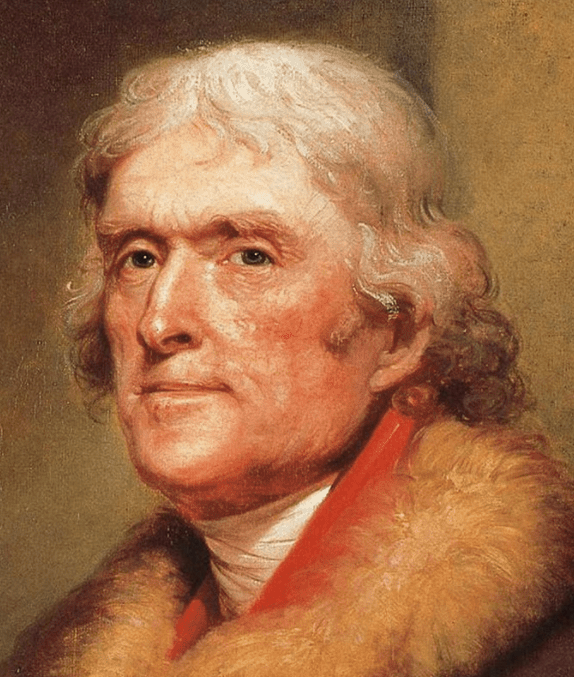
The Unitarian Thomas Jefferson detested the Calvinism of old (Puritan) America
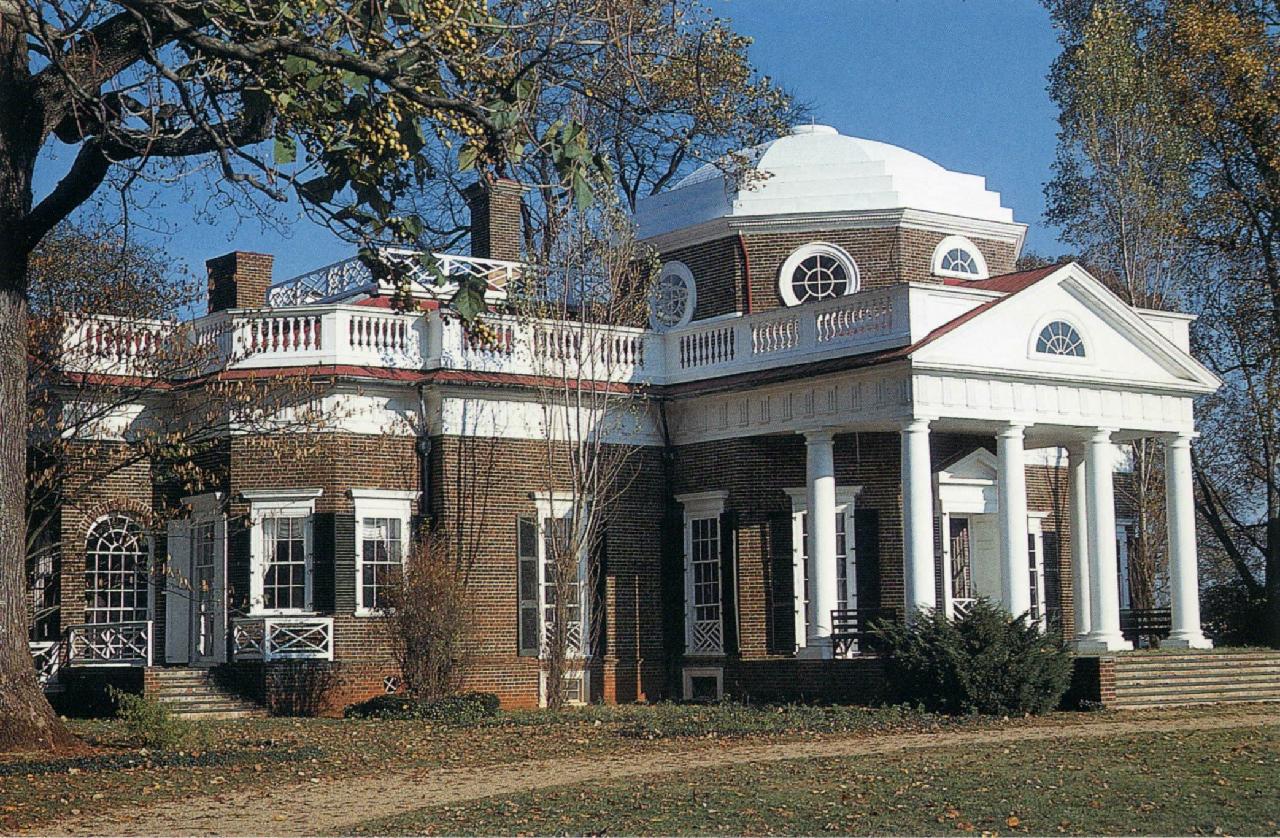
On a hilltop in
rural Virginia, Jefferson spent himself into near bankruptcy building
his Monticello mansion into the place of ultimate human perfection (his
physical "bubble")
|
Robert Owen and his communitarian or socialist experiments in America
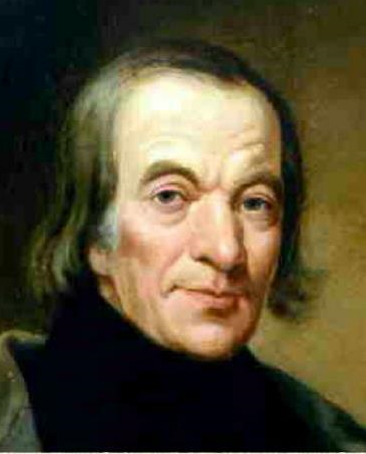 Right in line with this rising Humanist Idealism
were many experimental communities set out in America to show how a
perfectly designed social order could produce unprecedented prosperity
and happiness. One of the most active of such idealists was the
Scottish social philosopher, Robert Owen. He actually set up a number
of such utopian societies in America. But the most famous of these, the
one he put his heart and soul into, was his New Harmony community, set
out in the frontier land of Indiana. Owen bought the land in 1825 from
a community that had also, under the leadership of the Lutheran Pietist
George Rapp, attempted a similar experiment in perfect Christian
Socialist living, a Harmony project that failed because of the
inability of the German immigrants to live up to Rapp's great hope for
them. Right in line with this rising Humanist Idealism
were many experimental communities set out in America to show how a
perfectly designed social order could produce unprecedented prosperity
and happiness. One of the most active of such idealists was the
Scottish social philosopher, Robert Owen. He actually set up a number
of such utopian societies in America. But the most famous of these, the
one he put his heart and soul into, was his New Harmony community, set
out in the frontier land of Indiana. Owen bought the land in 1825 from
a community that had also, under the leadership of the Lutheran Pietist
George Rapp, attempted a similar experiment in perfect Christian
Socialist living, a Harmony project that failed because of the
inability of the German immigrants to live up to Rapp's great hope for
them.
But anyway, what textile manufacturer Owen was
proposing to do in his New Harmony had nothing to do with Christianity.
A huge effort was made to make his New Harmony the perfect setting of
purely Secular economic and social perfection. While Owen went around
to promote support elsewhere for his New Harmony project, he left its
supervision to his sons. They in turn ran into all sorts of
difficulties when well-intended and not so well-intended individuals
flocked to the project, a project that was designed to become
self-supporting through the industrial enterprises Owen attempted to
start up there. Some were willing to accept the responsibilities
required of this communal (Socialist) venture. Many were not. Chaos
quickly set in. Ultimately no moral structure (other than a breezy
Humanism) underlay the project. Owen himself was strongly
anti-Christian, and strongly pro-Humanist, but like all Humanists,
could never figure out how to get a free people to accept social
responsibilities on the basis of their own instincts. Other prominent
Humanists visited and offered counsel to the community. But they got no
further in getting a true social order up and running. Two years later
(1827) the Owens had to abandon their project – without having learned
anything in the process.
|
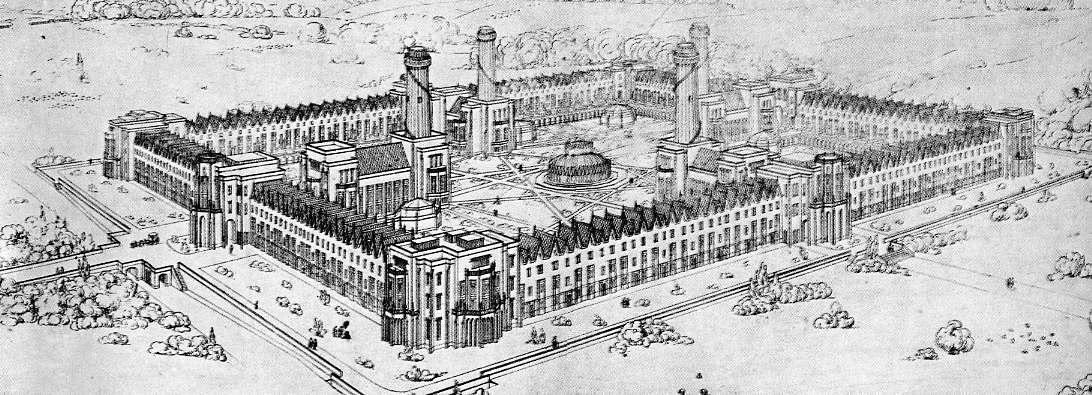
Robert Owens' proposed "New Harmony"
|
Emerson and the Transcendentalists
Another version of this development was found
among the Transcendentalists, who reached well beyond the purely
rational world of the Unitarians and other Humanists with their
mystical quest for the Divine as a higher order of disciplined thought.
They sought, through different forms of spiritual discipline, to
embrace Divinity both in a oneness with nature and a sense of reaching
beyond even the natural. They sought to be as fully human as possible
so as to find the Oneness of Divinity as fully as possible. They too
tended toward lofty communalism in the hope of reaching beyond the
coarse nature of selfishness and sin, to find a more perfect human
harmony.
Another
group of intellectuals of the day were the "Transcendentalists" who
dreamed of a coming world of similar perfection ... but one based more
importantly on the simplicity of the pure human spirit in close touch
with the forces that direct the universe
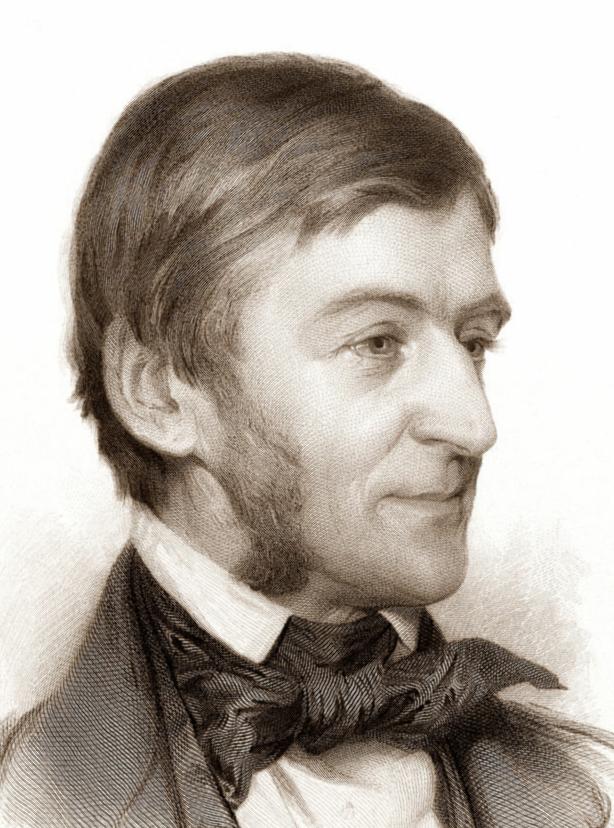
Ralph Waldo Emerson
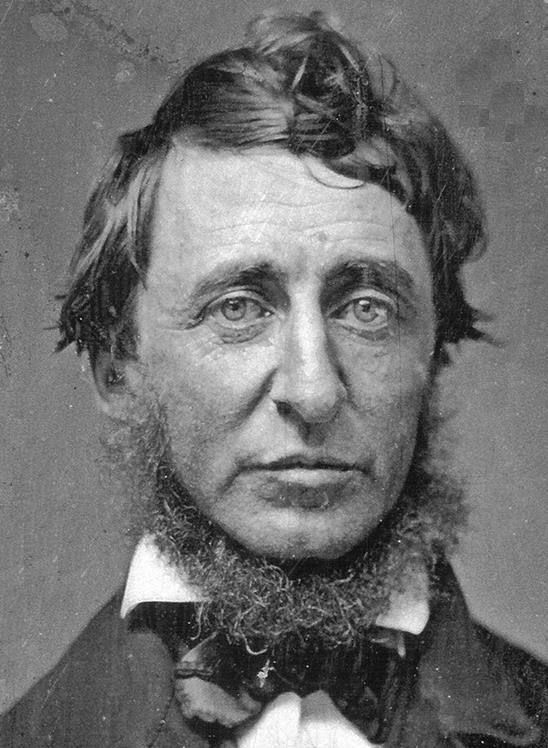
Henry David Thoreau
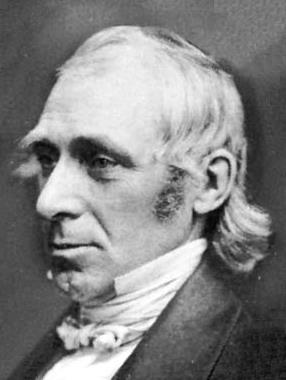
Amos Bronson Alcott
|
Ralph Waldo Emerson, Henry David Thoreau, and Amos
Bronson Alcott (father of novelist Louisa May Alcott) were neighbors in
Concord, Massachusetts, who set the pace of Transcendentalism. Thoreau
attempted to find serenity in two years (1845-1847) of relative
isolation in the woods at Walden Pond, Alcott in his experimental
school in Concord, and Emerson in his philosophical lectures and
writings.
Emerson, born in 1803, grew up as the second of
five sons (two daughters and another son died in infancy) of a
Unitarian minister William and his wife Rebecca. His father died when
he was almost eight and he was raised by a circle of women, including
an aunt with whom he would become very close. At age fourteen he
entered Harvard College and graduated at age eighteen (surprisingly,
only in the middle ranking of his class). He went to work with a
brother, William, teaching young women at his mother's home. When
William went off to Germany to study divinity, Emerson then established
his own school. Several years later he himself entered Harvard Divinity
School for study. In early 1829 he was ordained to the ministry at
Boston's Second Church as its junior pastor.
Then tragedy began to hit Emerson. In 1831 his
young wife Ellen died of tuberculosis. Then a younger and very
brilliant brother, Edward, who also had long been struggling with his
health, both emotional and physical, died of the same disease in 1834.
Finally another younger brother, Charles, died in 1836, also of
tuberculosis. Emerson was devastated.
Following his wife's death, he began to distance himself emotionally
from traditional Christianity. The following year (1832) he resigned
his position at the church to begin the search elsewhere for the answer
to life's questions. At the end of that year he departed for a grand
tour of Europe, where he would meet a number of such intellectual
luminaries as the English philosopher John Stuart Mill and the Scottish
lecturer and social commentator Thomas Carlyle. In Paris he would
become intrigued by the botanical gardens of the Jardin des Plantes,
where he hit upon the thought of how all things in life seemed
mystically interconnected.
Returning to America in October of 1833 he
contemplated Carlyle's career as a lecturer, and the next month
undertook the first of the 1,500 lectures he would offer over the next
near-half century. These lectures would be his stock-in-trade, the
source of a number of books he would publish.
In 1835 he remarried (Lydia or Lidian) and they
moved to Concord, where two sons and two daughters were born. Here, in
company with three other scholars, the Transcendental Club was founded
(1836) – with the hope of birthing a community similar to the salons of
Europe where intellectuals would gather to discuss weighty matters of
life. Among those who would join them was Thoreau, for whom Emerson
took on something of a role as a father-figure.
Emerson's split with Christianity became evident
when in 1838 he delivered a lecture at Harvard Divinity School,
affirming that Biblical miracles and the claim of Jesus' divinity were
merely the inventions of the classic mind that assigned God-like
qualities to their heroes. Emerson instead advocated something of a
Humanism that freed the soul from the shackles of traditional religion
so that it could soar in search of the higher meaning of life. Harvard
Divinity School was scandalized by his bold Humanism (he would not be
invited again to lecture there, until thirty years later when even
Harvard Divinity School had begun to come around to holding many of
Emerson's Humanist ideas).
Efforts were made by Emerson's neighbor Alcott to
put their organic philosophy into full operation as an experiment in
communal living, when the entirely vegetarian farm Fruitlands was
established. It was not a grand success. After it failed, Emerson
purchased another farm for Alcott for a second attempt. He even
purchased two sections of land for himself (though he himself did not
work the land). As it turned out, the Transcendentalists were better at
thinking, discussing, lecturing and publishing than at securing
material success, although Emerson's lectures were beginning to pay
well and his books were being widely read.
Emerson now branched into esoteric or
Universalistic study, taking up the study of Hindu Vedanta, reading the
Bhagavad Gita and commentaries on the Vedas by Henry Thomas Colebrooke.
His philosophy of the Oneness of Life had the larger religious
confirmation of the Hindu religion. This fit his temperament better
than traditional Christianity.
The earthier intelligentsia
Meanwhile, for those less comfortable, where
life's dangers were not guaranteed to be manageable, where life could
suddenly take a violent turn (hunger, disease, Indian massacre) such
Humanist Rationality seemed as absurd as their personal trust in a God
of miracles seemed absurd to the Humanists.
Indeed, even Nathaniel Hawthorne, who once was a
neighbor of the Concord Transcendentalists, eventually became something
of an anti-Transcendentalist, tending to delve more into the darkness
of the religious ethical issues of his era in his novels The Scarlet
Letter (1850) and The House of the Seven Gables (1851). Likewise, Edgar
Allan Poe could be just as abrasive in his dislike of the romantic
optimism of Transcendentalism.
There were also a number of other American writers
and artists who represented well the life of the common man, the serene
primitiveness of the American landscape and the exotic culture of the
Indians, giving excellent characterization of the democratic realities
of life in America. James Fenimore Cooper wrote elegantly of the
complexities of life in America in such novels as The Pioneers (1823)
and The Last of the Mohicans (1826). And in the field of graphic art,
the works of Thomas Cole and others of the Hudson River School were on
a parallel with the best of European landscape artists of the same era,
as were the works of George Bingham who, in addition to his beautiful
landscapes, portrayed insightfully democratic life in the Mississippi
and Missouri River valleys.
|
But
there were other intellectuals who saw life in darker colors
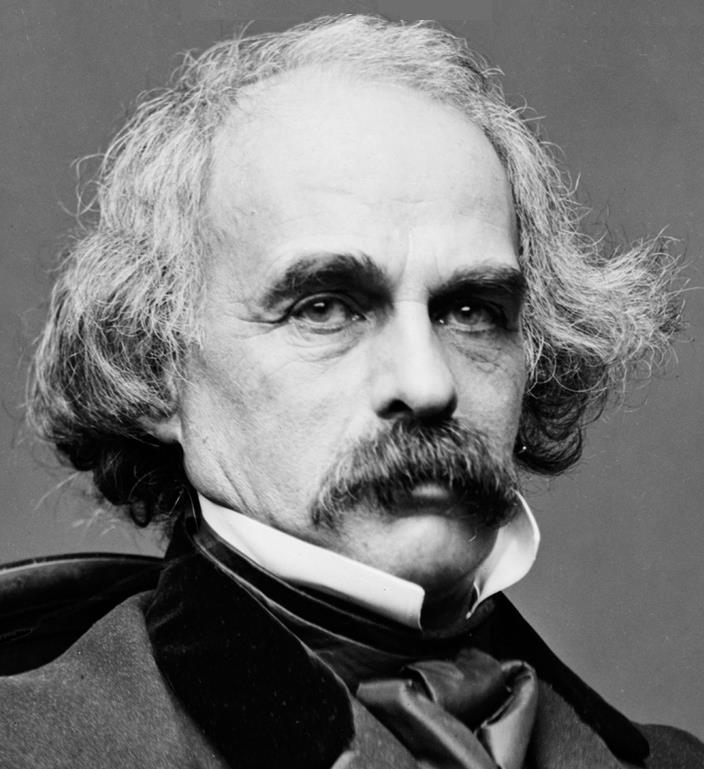
Nathaniel Hawthorne
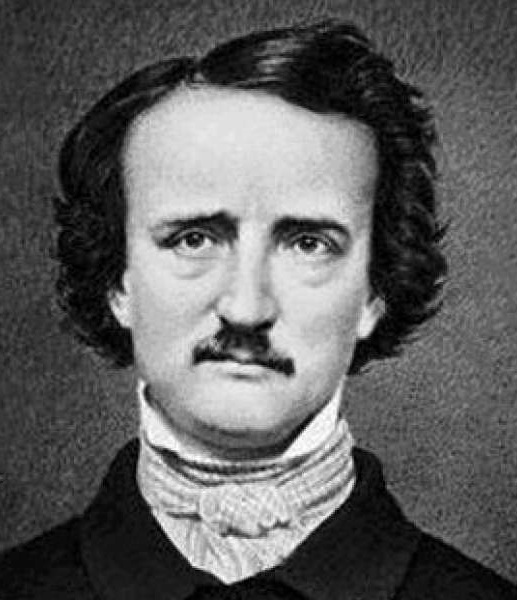
Edgar Allan Poe
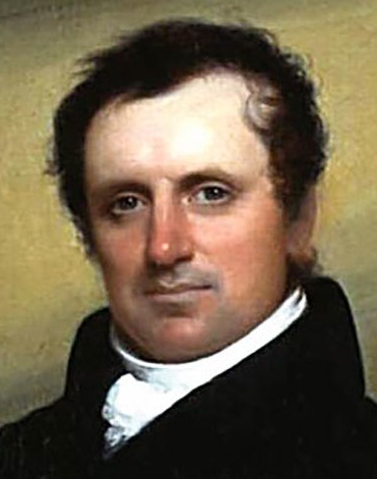
James Fenimore Cooper
THE
SECOND GREAT AWAKENING |
|
As far back as the 1790s, the first decade of the
new Republic, it appeared as if Christianity might be resolving itself
simply into a civic religion serving to provide a moral foundation and
discipline for the emerging United States as a distinct society.
Certainly that was how the intellectuals, especially the Deists among
them (most all intellectuals at that point), understood things. But
such civic religion did not fill churches, for it resided solely in the
independent thinking and behavior of citizens as they went about their
daily routines. It did not need pulpits to show the people how to go
about doing such things. Human logic itself seemed pretty good at
constructing such moral-intellectual systems.
Part of this developing religious dynamic
of Christianity as principally a civic religion was the result of the
way that the war and the consequent independence of American society
had a tremendous impact on the religious character of America. The
Church of England, well beloved by the Tories particularly numerous in
the American South, was devastated by the war. Eventually it was able
to service Anglican loyalists in America by establishing its own
Episcopal authority, and thus be able to carry on as before, but
independent of England itself in doing so.5
As for the Calvinist Congregationalists
in New England and Presbyterians in the Middle Colonies that had been
active in leading the independence movement, post-war America had been
expanding in population at a far greater rate than the slow process of
producing seminary-trained pastors could meet the demand for new
churches and individuals to pastor them. Also the very logical
character of Congregationalist and Presbyterian theology, especially
among the more highly educated of the membership (including,
importantly, pastors), caused many to be quite comfortable in the Deist
camp, leading some of them even to switch their loyalties to the
growing (for the time being anyway) Unitarian movement.
Baptists and Methodists however did not
have this same problem, being open to the recruiting of lay pastors
(not seminary trained but simply called out of general society to
Christian ministry). These individuals had been led to take up their
calls not by academic logic, but by a highly personal, and most
frequently highly emotional, sense of personal judgment, moral
cleansing and new purpose to their lives, a purpose calling them into
full service to the very process that had personally saved them out of
a world of sin. They were on fire to bring others to this same
spiritual renewal or revival that they themselves had gone through
personally. And they were willing to face all sorts of obstacles, both
by nature and by man, in order to bring (especially to the frontier
where churches were virtually non-existent) the gospel of salvation in
Jesus Christ to hungry hearts there. This was not mere civic religion.
This was religion of a very personal spiritual nature.
Millennialism6 and perfectionism
Behind all this religious activity was
something very much part of the spirit of the Jacksonian times. As
Tocqueville had noticed, Americans had a strong sense of personal
destiny, an urgency to accomplish some greater work, to move forward,
to fulfill some nobler purpose in life. Life was viewed as a challenge,
one faced with many obstacles, many of them deficiencies in the people
themselves, personal deficiencies or sins that needed cleansing, ones
that required some act of purification which would clear the way for
them to gain some personal victory. Christian revivals offered exactly
just such an opportunity for getting things right with God.
Empowering this activity was an abiding
sense that history was about to find completion in the form of the
second coming of Christ and his final judgment of all people, saints
and sinners, a widespread sentiment of the times due in part to the
horrible 1837–1841 Depression which undercut severely the American
belief that life moved forward along largely logical lines. Surely this
grand catastrophe pointed to the ultimate and thus final judgment of
God in the form of the long-awaited coming of Christ as the ultimate
judge of life on earth.
Consequently, many Americans came easily
to the conclusion that they were approaching the millennium described
in Scripture (Revelation) in which all must be made perfect in
preparation for that final coming of Christ. Sinful behavior needed to
be corrected, both for society as well as the individual. Perfectionism
or social reform was thus urgent. The institution of slavery in
particular needed to be abolished – immediately. Alcoholism, which was
rampant on the Frontier and in the workshops back East, also needed to
be curbed. Caring for the poor became a priority. Injustices of
whatever variety needed to be addressed, the treatment of women being
one of the issues taken up by a new generation of feminists. Social
experiments accompanied this mood, in which varieties of utopian
programs were put in place to answer the challenge of the times. Most
of these failed miserably, but failure did not seem to discourage
others from trying.
Sadly, the quest for perfection usually
set one group against another, even splitting groups time and again as
perfectionists understood faults in the others, even small faults, to
be the work of the devil in his attempt to stop the arrival of the
millennium. It got confusing, and at times it became very bizarre in
the routes such perfectionism took this rather primitive religious
instinct so endearing to the American frontiersmen. But it made those
simple souls, those who had moved to the frontier because their lives
back East amounted to so little, now understand how special they were,
even how royal they were, their purity of conscience bringing them into
a very special relationship with God. On this sentiment they were very
ready to build a new world.
5In
the years between the 1st Great Awakening and America's war for
independence, the Church of England's Society for the Propagation of
the Gospel not only sought to bring the unchurched of America to
Christ, but more importantly, it set out to bring non-Anglican
Christians to leave their Congregational, Presbyterian, Quaker churches
and join the Church of England, being far more active in setting up
Anglican churches in coastal New England and the Middle Colonies than
along the American frontier. As we have already noted, this assault on
highly independent American Protestantism was another one of the ways
that England had infuriated the colonies and driven them to want full
independence from the mother country!
6A
belief that the coming of Christ will usher in a 1,000-year Golden Age,
a long period of time prior to the Day of Judgment, and the
establishment of a New Heaven and a New Earth.
|
Francis Asbury
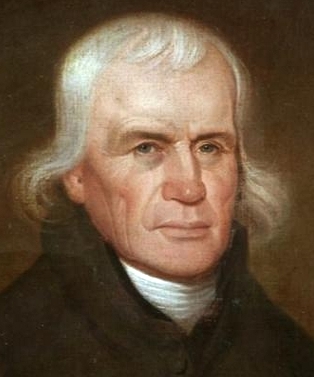 Highly empowered by this national mood was the
rising body of Methodists. Earlier, Methodism's actual founder, John
Wesley, had originally been very opposed to the American rebellion
against English royal authority. Consequently almost all of the
preachers Wesley had sent to the colonies returned to England when the
war first broke out. But Francis Asbury stayed behind, to organize
Methodist lay preachers to help nurture American hearts during the dark
days of the war. After the war, Wesley agreed to ordain American
Methodist pastors – including Asbury, whom he named as one of his two
Methodist superintendents in America, authorized to supervise those
pastors – in order to bring the Methodists into some kind of proper or
apostolic communion with the English Methodists. Thus it was Asbury and
his lay preachers in America who would push Methodism forward,
preachers who fit more closely the democratic mood of the times, able
to relate better to life on the frontier. Estimates are that Asbury
himself, in order to preach on virtually a daily basis, traveled
thousands of unimaginably horrible miles each year in hunger, cold, wet
or heat, frequent loneliness and extreme exhaustion, for a possible
total as much as 275,000 miles in order to deliver a total of 16,000
sermons! During his time of leadership (1784–1816) the Methodists grew
in number from 1,200 to 214,000 members, with 700 ordained preachers to
pastor the flock. Highly empowered by this national mood was the
rising body of Methodists. Earlier, Methodism's actual founder, John
Wesley, had originally been very opposed to the American rebellion
against English royal authority. Consequently almost all of the
preachers Wesley had sent to the colonies returned to England when the
war first broke out. But Francis Asbury stayed behind, to organize
Methodist lay preachers to help nurture American hearts during the dark
days of the war. After the war, Wesley agreed to ordain American
Methodist pastors – including Asbury, whom he named as one of his two
Methodist superintendents in America, authorized to supervise those
pastors – in order to bring the Methodists into some kind of proper or
apostolic communion with the English Methodists. Thus it was Asbury and
his lay preachers in America who would push Methodism forward,
preachers who fit more closely the democratic mood of the times, able
to relate better to life on the frontier. Estimates are that Asbury
himself, in order to preach on virtually a daily basis, traveled
thousands of unimaginably horrible miles each year in hunger, cold, wet
or heat, frequent loneliness and extreme exhaustion, for a possible
total as much as 275,000 miles in order to deliver a total of 16,000
sermons! During his time of leadership (1784–1816) the Methodists grew
in number from 1,200 to 214,000 members, with 700 ordained preachers to
pastor the flock.
The Methodist circuit riders
Also
playing a key role in this development were the Methodist circuit
riders, formed from that same adventurous spirit of the frontier
culture, who had answered a call from God to head out alone on
horseback into the Western wilderness. Here they faced storms, hunger
and hostile Indians – to bring the comfort of the Christian religion to
scattered settlements and cabins that dotted the wilderness. Their
offerings were not just the assurance that God was with these settlers
but that they were also somehow still connected with the rest of
society, which was also with them. The way the circuit riders helped
settlers to keep body and soul together was thus enormously appreciated
on the Western frontier, where the Methodist church – or at least the
Methodist movement – grew rapidly, soon to become the largest of the
Christian denominations in America. By 1840 some 3,500 circuit riders
and some nearly 6,000 pastors were supporting the faith of 750,000
Methodists!
The African Methodist Episcopal (AME) and AME Zion churches
The Methodists were officially opposed to
slavery from the beginning of the denomination's entry onto the America
scene in the 1760s. Asbury was hotly opposed to the practice, but
learned that to reach Black audiences held in bondage as well as
Whites, he would have to tone down his rhetoric on the subject.
Otherwise he would send slaveholders off into fellowship with Baptists
and Presbyterians, which at the time took no such position on the
subject. But the Methodist position did not go unnoticed by free
Blacks, and Methodism would have a tremendous impact in getting their
Christian world organized and up and running.
Richard Allen was a Black slave who was
able to work to pay for his freedom from his Philadelphia master. In
earlier years he had been very attentive to the Methodist circuit
riders who had come to his plantation, and even before securing his
freedom he had become active in encouraging fellow slaves with the
gospel message. Once free he continued this activity, forming one small
society and then another, until in 1816, in association with another
free Black pastor, Daniel Coker, five newly developed congregations in
Philadelphia were able to hold their first Methodist General
Conference. Taking up the spiritual disciplines of Wesley's Methodists,
they took the identity as the African Methodist Episcopal (AME) Church,
the beginning of what would eventually turn into another of one of
America's larger denominations.
Meanwhile in New York City in 1800
another group came together to form the Zion Church which grew
significantly, until in 1821 they were able to constitute themselves as
the African Methodist Episcopal Zion Church under Bishop or
Superintendent James Varick. The AME Zion Church too spread across the
country among free Blacks. Both Methodist churches would compete in
eventually playing a leading role in shaping the religious lives of
newly freed slaves after the Civil War.
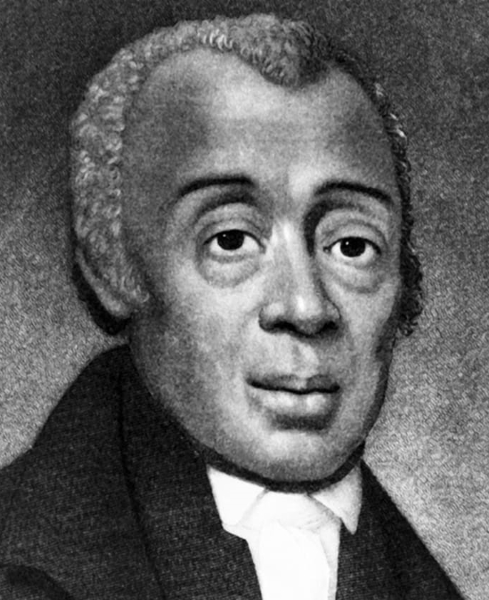
Richard Allen
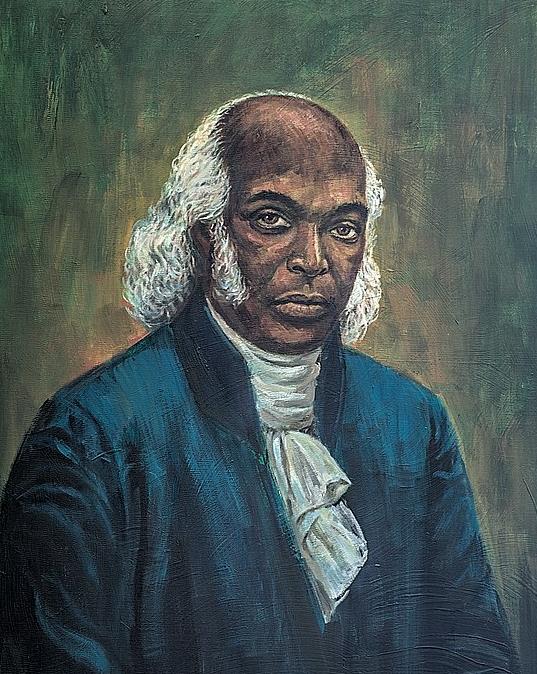
James Varick
Camp meetings.
Meanwhile, off on the American frontier,
the highly individualistic but also highly isolated life on the part of
those Americans that lived well away from the comforts of the East
produced among Westerners a hunger for personal meaning within the
context of community, membership in larger society being a rare but
well-appreciated commodity. Most frequently this took the form of huge
gatherings whenever a local Christian revivalist appeared in the
region. Thousands would turn out to spend a week at an improvised
encampment listening to an array of preachers, singing and dancing,
shouting and fainting, and having a thoroughly good time.
|
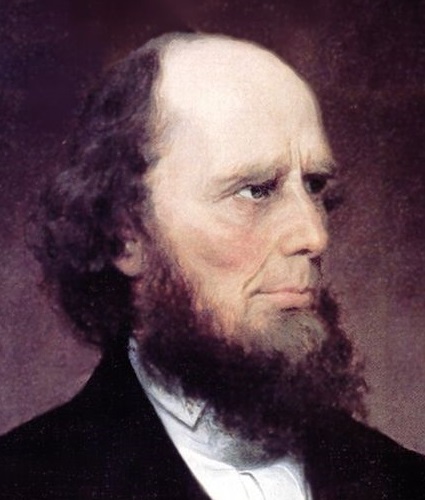
Charles Grandison Finney – Presbyterian revivalist
| In
a day of declining spirituality, Finney developed a highly organized
camp revival program which brought the gospel to the faithful in both
upstate New York (the "burned-over district" Finney termed it ...
because of the constant run of camp revivals there) and New York City. Others would copy his precise methodology.
|
|
Finney
Taking a more structured (and thus "logical")
approach to revivalism was the lawyer-turned-Presbyterian-minister
Charles Grandison Finney. Though a Presbyterian, a denomination which
traditionally viewed salvation as solely a matter of God's graceful
election (and thus not really a personal work or achievement of man
himself), Finney fit better the spirit of the Baptist and Methodist
revivalists. He was required to appear before a Presbyterian board to
examine his views on faith versus works, an issue which has caused considerable controversy since almost the founding of
Christianity. In the end he satisfied the board that he preached a
doctrine of grace rather than works, although his revivals' goal of
cultivating immediate repentance and renewal had something of the
quality of works before grace.7 His careful structuring of his
revivals, taking place in the period 1825 to 1835 in both the rural
setting of up-state New York and the urban setting of New York City,
became a model that other revivalists would follow. It helped not only
tone down (somewhat) the emotional level of these revivals, it also put
them on steadier religious foundations.
7But this is a subject that no Christian has ever satisfactorily resolved by mere logic or precise theological argument!
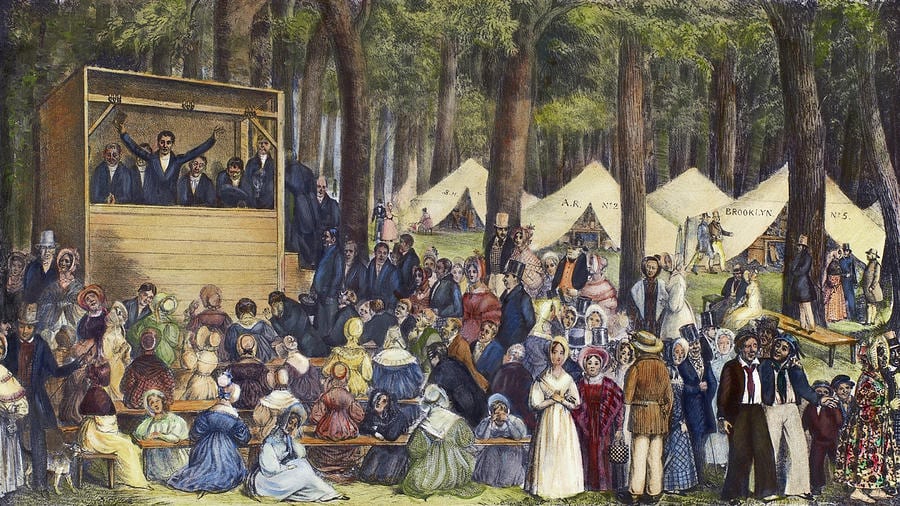
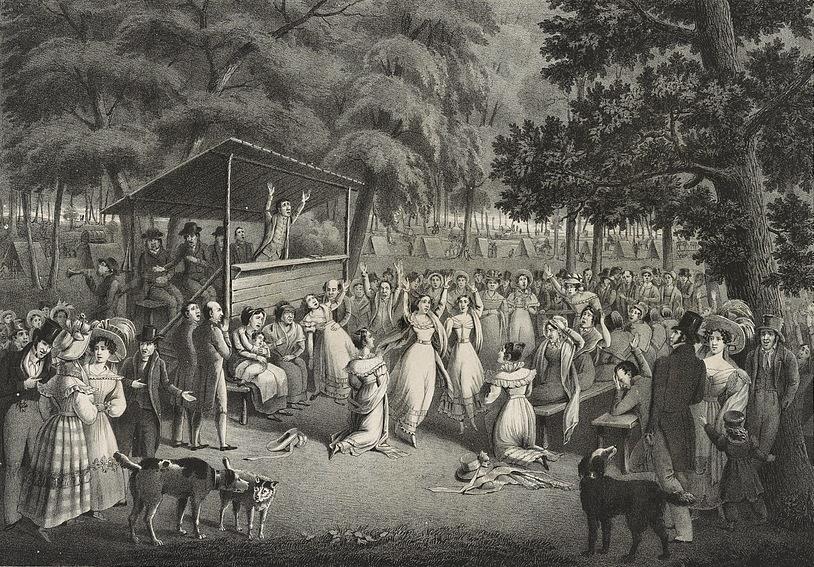
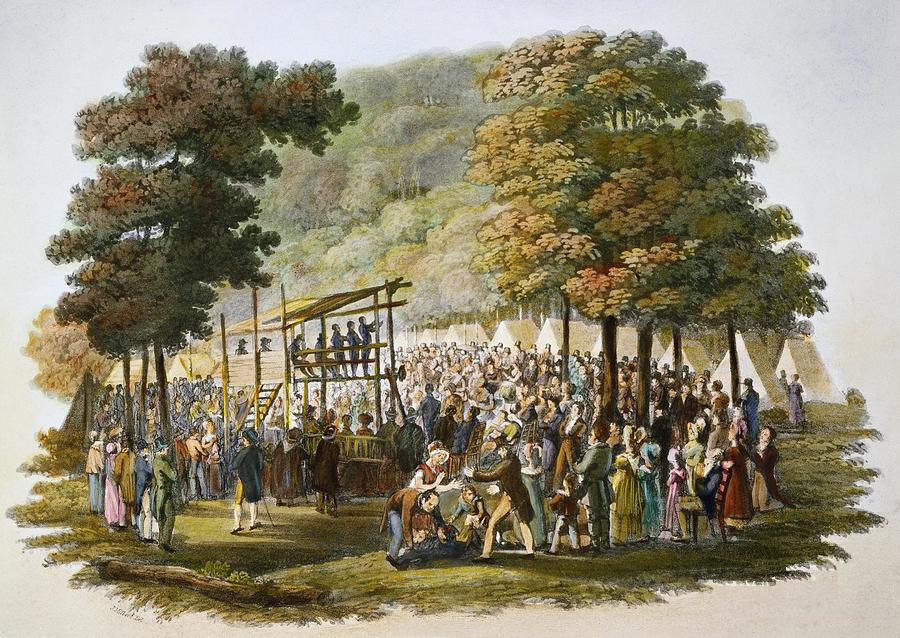
A Methodist camp meeting employing the Finney model
|
Millerites and the Seventh-Day Adventists
Another New York revivalist who played big on
these instincts was the farmer and Baptist lay-preacher William Miller,
who in 1833 predicted (on the basis of calculations he drew up from the
Book of Daniel) that the long-awaited event of Jesus Christ's return to
earth was going to take place sometime in the period 1843–1844, the
accompanying rapture also ending life on this planet. His views began
to gain wider acceptance as the 1840s loomed into view, his prophecy
even taken up by followers in England, Norway and Chile. Ultimately in
1844 he and his followers gathered on hilltops and rooftops in March,
again in April and finally in October in anticipation of the rapture.
But instead a Great Disappointment occurred when Jesus failed to show
up on schedule, causing his following to break up.
Surprisingly, however, this was not the
end of his massive religious movement. Others picked up Miller's vision
(particularly its millennialist perspective), importantly the female
prophet Ellen G. White, who cultivated a huge group of followers that
would eventually take the name Seventh-Day Adventists. They took up
perfectionist ways in the avoidance of alcohol, meat, and other foods,
advocating instead vegetarianism. From this group would eventually come
such famous breakfast food producers as Kellogg and Post.8
The Burned-over district9
One of the
places that seemed to be particularly active in this new religious
dynamic was the "burned-over district" of Western New York. Here wave
after wave of millennialist revivals occurred, producing some of the
most notable elements of the Second Great Awakening. The Millerites
were very numerous in this region. Shakers were also numerous in this
part of the state.10 The utopian Oneida Society was also established
there to practice the idea of social communalism.
8Vegetarianism was a common trend among the millennialists, who believed that meat-eating made man a brutal beast.
9The
term "burned-over district" was assigned by Finney to this region
because it had held so many revivals that Finney was certain that there
could be no one there left to convert.
10The
Shakers, as the Quakers before them, were noted for the shaking of
their bodies when they entered into a rapturous union with the Spirit
of God. They were notable also in that they believed that sex was
bestial behavior and thus they did not have offspring of their own,
forcing them to keep the community going through converts. Their
religion required all property to be held jointly; the equality of the
sexes; children (brought in from the outside world) belonging to the
whole community; the profits of workmanship shared communally, etc.
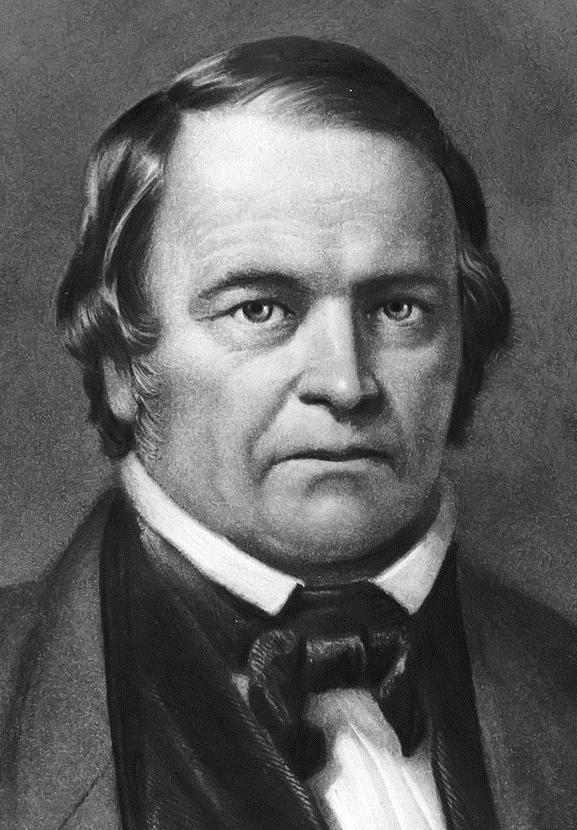
William Miller
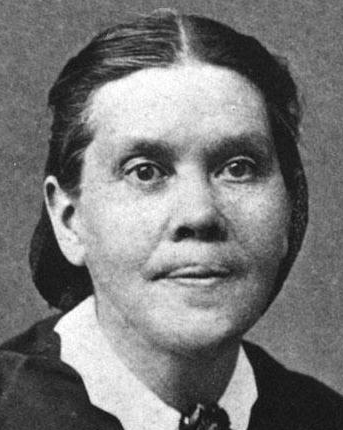
Ellen G. White
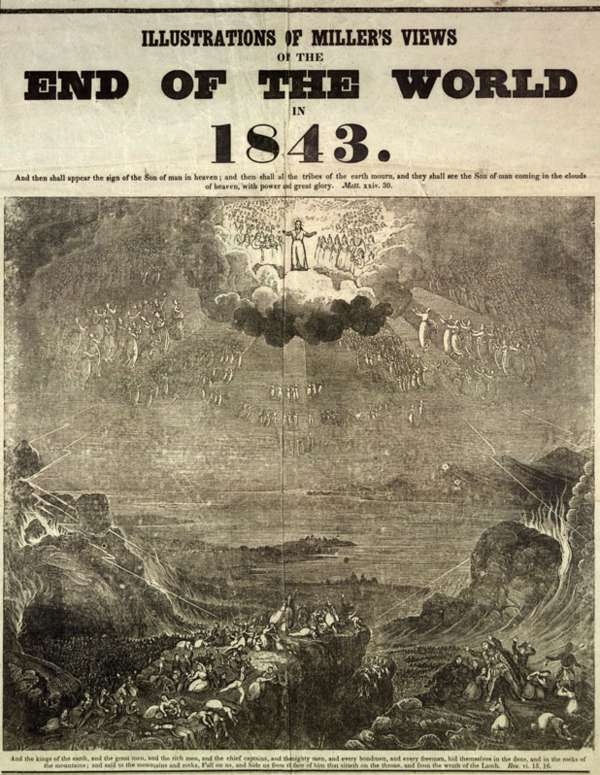
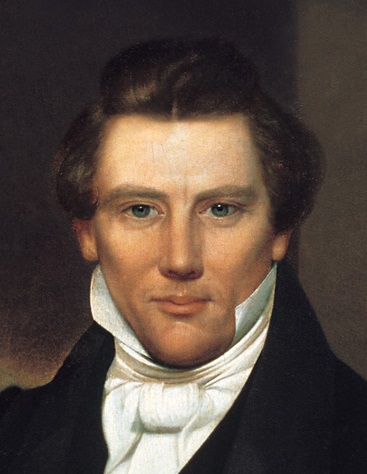
Joseph Smith
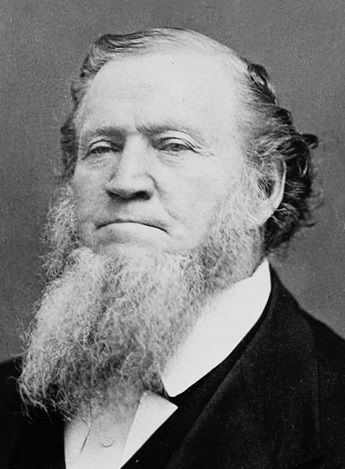
Brigham Young
|
The Mormons
Certainly the most amazing phenomenon to come out
of all this millennialism, and in this case even this same burned-over
district of Western New York, were the Latter-day Saints or Mormons, a
group that followed the prophecies and teachings of Joseph Smith, Jr.
As a teenager, Smith claimed that he had
a number of visions, the most important being a visit by the Angel
Moroni in 1827, who directed him to a place where he reportedly uncovered a book
of golden plates on which were written in some form of reformed
Egyptian the story of the ancient Jews and of Christ and his visit to
America. Using a special technique, he translated what he saw written
there by ancient authors (Mormon being chief among them), which in 1830
Smith published in English translation as the Book of Mormon.11
That same year he formed his first congregation as the Church of
Christ, teaching his followers the new doctrines, and then sending them
west to spread the new revelation as Latter-day Saints.
His ultimate goal was to establish a new
Zion, a community of the Latter-day Saints, to prepare the way for the
coming of Christ. At first he thought it would be in Ohio, where in
1831 a large group of his followers assembled. But then some of his
followers moved on to Missouri, planning to establish his New Jerusalem
or Zion there. But they ran into trouble when the local citizens
reacted to the Mormons pouring into their area. Smith ran into the
resistance of the local Missouri militia when he arrived in Missouri to
try to secure the land for his followers, and thus he decided to build
his temple in Ohio. But a major bank failure (resulting from the panic
of 1837) undermined the harmony of his followers and Smith migrated
with those who still remained with him back to Missouri. Once again he
faced stiff resistance there, except this time organized by the
governor of Missouri, who in 1838 was determined to drive the Mormons
from his state. Thus some eight thousand Mormons followed Smith to
Nauvoo, on the Illinois side of the Mississippi River.
For the next few years he was able to
proceed in the building of his temple, until the citizens of Illinois –
seeing the land being overrun by these Mormons and shocked at the
practice of polygamy taken up by Smith in 1843, a practice that seemed
now so central to Mormon social organization – thus also began to take
up arms against the Mormons. Then in June of 1844 Smith and his brother
Hyrum were killed by an angry mob, throwing the Mormon community into
confusion as to who was then to lead them.
At this point a number of Smith's
colleagues stepped forward to claim succession. Brigham Young took the
lead, although other individuals also claimed the title and led their
followers off to form their own separate Mormon communities. But after
two years of trying to make things work out for them in Illinois, Young
decided in 1846 to take his thirty-five wives and hundreds of followers
West, all the way to the Utah territory in 1847 where they hoped to be
able to build their community in peace. There indeed they found just
such security – at least for a decade – and from there began to send
out missionaries to the larger world around them, to build the new
faith in anticipation of the coming millennium.
11The
book states that tribes of Israel (the Ten Lost Tribes?) had managed to
get themselves to the New World – as well as Jesus himself, who
appeared to the Indians soon after his Resurrection, producing several
centuries of exceptional peace among the Indians. Indeed, the book
claims that the Indians were in fact descendants of these migrating
Israelites.
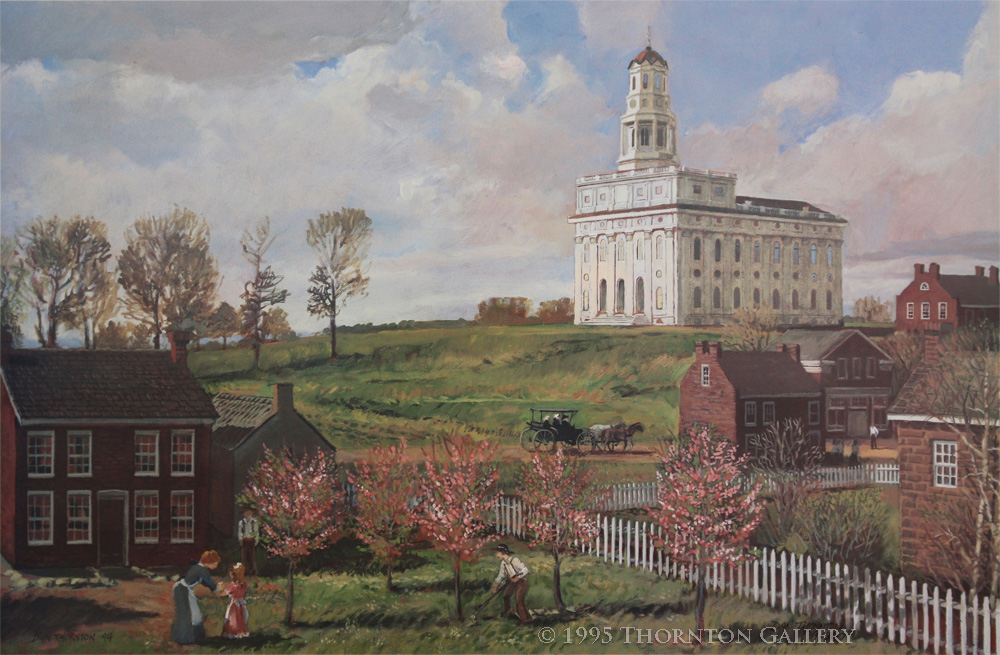
Smith's Temple at Nauvoo, Illinois
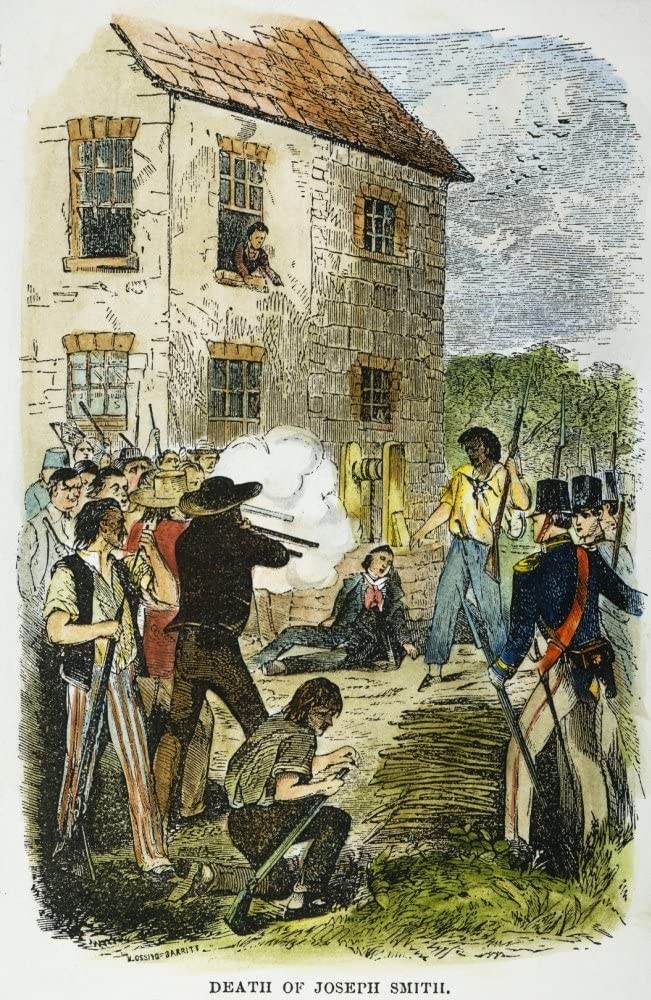
Joseph Smith and his brother Hyrum murdered by an angry mob of local citizens
(June 27, 1844)
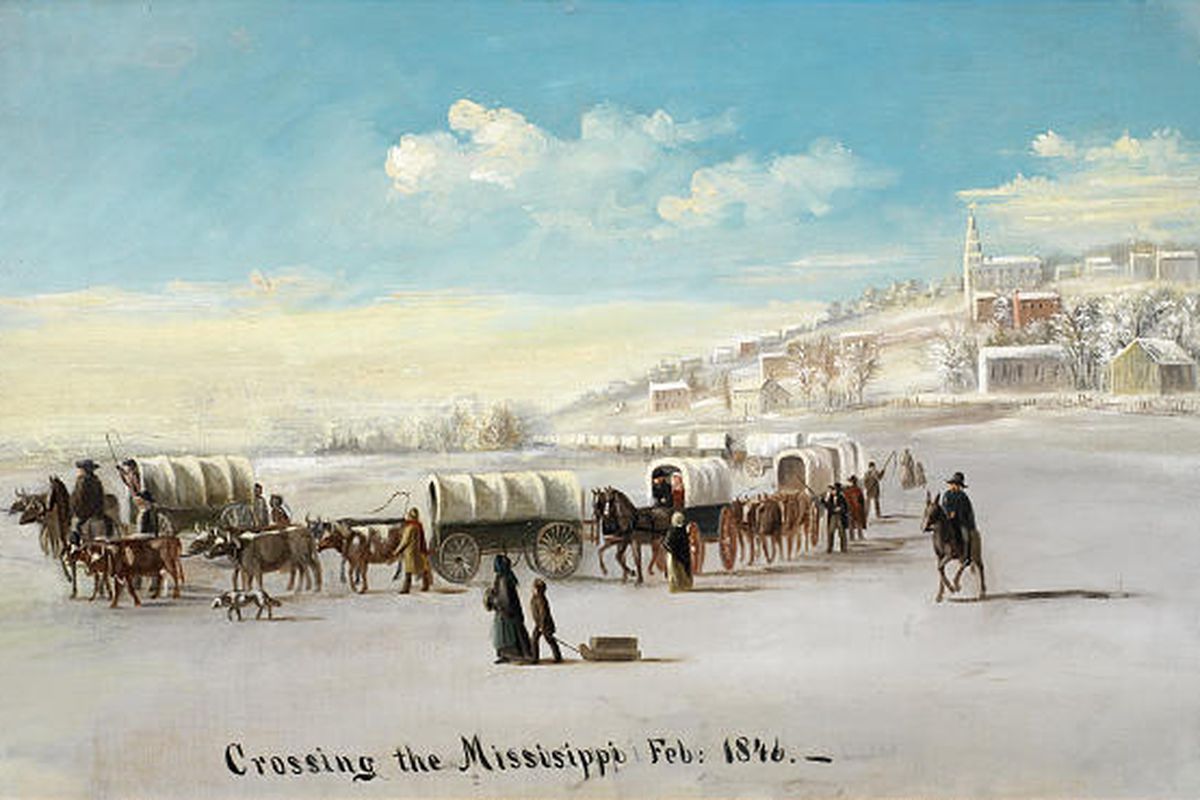
Young leads the Mormons West from Illinois ... to Utah
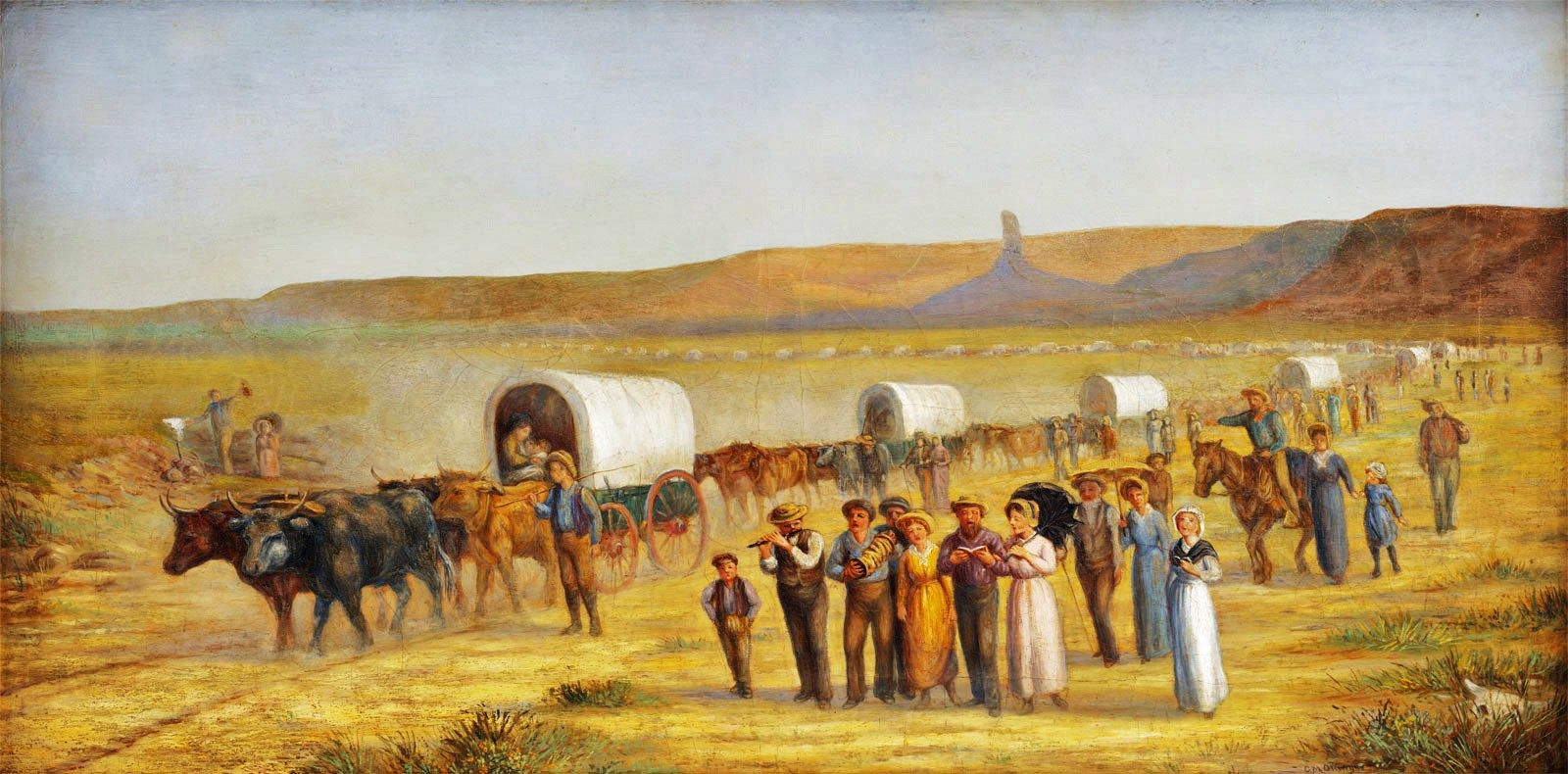
THE LARGER CHRISTIAN MISSION |
|
New School versus Old School Christians
All of this highly emotional spiritual adventure
impacting the young Republic was having the effect of splitting the old
Calvinist religions (Congregationalists, Presbyterians, Dutch Reformed)
between two camps: the New School group, supporting the revivalist
trend, and the Old School group opposing it. Once again, similar to the
earlier Great Awakening of the 1740s, the highly emotional character of
these revivals seemed to Old School conservatives to be a most
undignified way to bring people to Christ and also very shallow in how
it might develop Christian life over the long-term in comparison to
well-thought-through traditional Christian understanding. Worse, New
School revivalism seemed to support the Arminian (or Methodist) idea
that man was somehow able on his own to rise above his state of moral
or self-focused depravity and elect or choose entirely on his own his
personal salvation. Also, of course, the very idea that a person was
not properly aligned with God without having one of these highly
emotional moments of conversion seemed highly offensive to those raised
since their youth to follow the lines of the faith as best as they
could, understanding that they were indeed sinners, but always
throughout their lives as faithful Christians sensitive to the need to
keep themselves open to the judgments of God. For this latter group of
Old School or Christian conservatives the suggestion that the path they
were on was not sufficient because it had never arrived at an emotional
crisis point of decision was outrageously ridiculous.
Christian mission societies
However, the
Second Great Awakening did not in fact somehow leave the Old School
churches out of the religious developments of the early 1800s. On the
contrary, there were some very significant developments that took place
among these older denominations. Although they did not take on the
colorful features of New School revivalism, they went a long way in
developing the religious character of the young Republic.
What is being described here is the birth
in the 1810s and 1820s of a large number of interdenominational
Christian societies that sought to set Christianity to the task of
taking on a number of social problems, blemishes that embarrassed good
Christians. These Old School Christians also believed strongly that
America had a vital role to play as a model of Christian virtue to the
larger world. These new societies were thus set up to provide Christian
demonstrations as to how such issues as poverty, illiteracy, and just
plain ignorance of the Christian gospel were to be taken on by the
faithful.
Working across denominational lines
(Baptist, Methodist, Congregationalist, Presbyterian, Dutch Reformed,
etc.), Americans were very active in forming such groups as the
American Bible Society (to help every American family find itself in
possession of a Bible), the American Sunday School Union (to develop
Biblical literacy among the children of all social classes), the
American Tract Society (to put in the hands of everyone the simplest
explanation of and call to Christianity), the American Anti-Slavery
Society, and the American Temperance League (both fighting particular
social evils). Then there was the inter-faith (Congregational,
Presbyterian, Dutch Reformed) American Board of Commissioners for
Foreign Missions (ABDFM) created in 1810, which sent missionaries to
the Cherokee (and other American Indians) and ultimately overseas to
Hawaii, China, India, the Middle East and finally Africa. These
volunteer organizations became a vital part of the American
social-cultural dynamic that developed in accompaniment with America's
spread across the North American continent, and soon across the world.
Christian colleges
Christian colleges. As we have already
noted, from the time of the Puritans' early settlement in America,
higher education was a matter of vital necessity, not only in training
the pastors who would be expected to lead the Christian communities the
Puritans were establishing but in training in other areas such as the
law, business, finance, and teacher training – all so vital to the life
of their communities. Thus Christian America founded Harvard, Yale,
William and Mary, King's (Columbia), Georgetown, the College of New
Jersey (Princeton), New Brunswick and Andover Theological Seminaries,
as well as colleges such as Mount Holyoke, designed to give women the
same opportunity at a higher education. In fact, in the period between
the founding of the colonies and the mid–1800s, over 500 colleges were
founded by America's various denominations. This too was a key part of
Christian America's larger mission to be a Light to the Nations.
Horace Bushnell
And then there was the compelling voice
of a Connecticut pastor calling for interdenominational compromise, a
spirit of Christian unity ... and in doing so would greatly impact his
times (and continue to do so even through the rest of the 1800s): the
persuasive voice of Horace Bushnell. He took a unique position that
aligned him exactly with none of the contending Christian groups, yet
found value in all of them. With respect to the Old School Christians,
he was quite respectful of the way traditional Calvinist Christianity
was able to shape from a person's very early life, even childhood, key
Christian understandings that helped direct a person (elected purely by
the grace of God to the privilege of being born into full Christian
fellowship of Christian family and church) toward a long-term and
deeply faithful Christian life. This understanding was clearly laid out
in his very popular book, Christian Nurture
(1847). At the same time, he was highly supportive of the Unitarian
(and Arminian or Wesleyan or Methodist) viewpoint that man did have the
responsibility (and thus the choice in the matter) of disciplining or
ordering his own thoughts and actions as part of the mature Christian
life. And for a period of time he was quite supportive of the
Transcendentalists' mystical approach to God, seeing such a higher
reach of the soul as vital to a strong personal relationship with God.
However, in early 1848 he found himself decisively back in the support
of the idea of God, not in the form of the Transcendentalists'
Universalist Deity, but rather in the traditional Trinitarian view of
God as Father, Son and Holy Spirit. But even in this retreat, he
continued to believe that although emotional revivalism was not
necessary for everyone to reach God, it certainly served very well
those who had become quite lost in their journey in life and was an
authentic way of bringing such lost but spiritually hungry souls to
Christ – provided that such revival always was followed up by on-going
fellowship with a worshiping community, in order to make the
salvation-event a lasting transformation.
Although he would draw criticism from all
the communities for his less than full embrace of their respective
positions, his ability to see Christianity above these divisions would
come to be of great value to American Christianity in the days ahead.
|
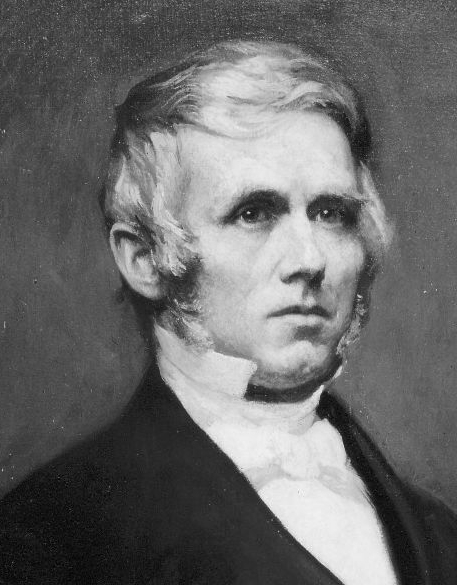
Horace Bushnell
 Miles
H. Hodges Miles
H. Hodges
| | | | | | | | | |





















 Inspired by a sermon preached in Baltimore in 1819
by Boston pastor
Inspired by a sermon preached in Baltimore in 1819
by Boston pastor 

 Right in line with this rising Humanist Idealism
were many experimental communities set out in America to show how a
perfectly designed social order could produce unprecedented prosperity
and happiness. One of the most active of such idealists was the
Scottish social philosopher, Robert Owen. He actually set up a number
of such utopian societies in America. But the most famous of these, the
one he put his heart and soul into, was his New Harmony community, set
out in the frontier land of Indiana. Owen bought the land in 1825 from
a community that had also, under the leadership of the Lutheran Pietist
George Rapp, attempted a similar experiment in perfect Christian
Socialist living, a Harmony project that failed because of the
inability of the German immigrants to live up to Rapp's great hope for
them.
Right in line with this rising Humanist Idealism
were many experimental communities set out in America to show how a
perfectly designed social order could produce unprecedented prosperity
and happiness. One of the most active of such idealists was the
Scottish social philosopher, Robert Owen. He actually set up a number
of such utopian societies in America. But the most famous of these, the
one he put his heart and soul into, was his New Harmony community, set
out in the frontier land of Indiana. Owen bought the land in 1825 from
a community that had also, under the leadership of the Lutheran Pietist
George Rapp, attempted a similar experiment in perfect Christian
Socialist living, a Harmony project that failed because of the
inability of the German immigrants to live up to Rapp's great hope for
them.

























